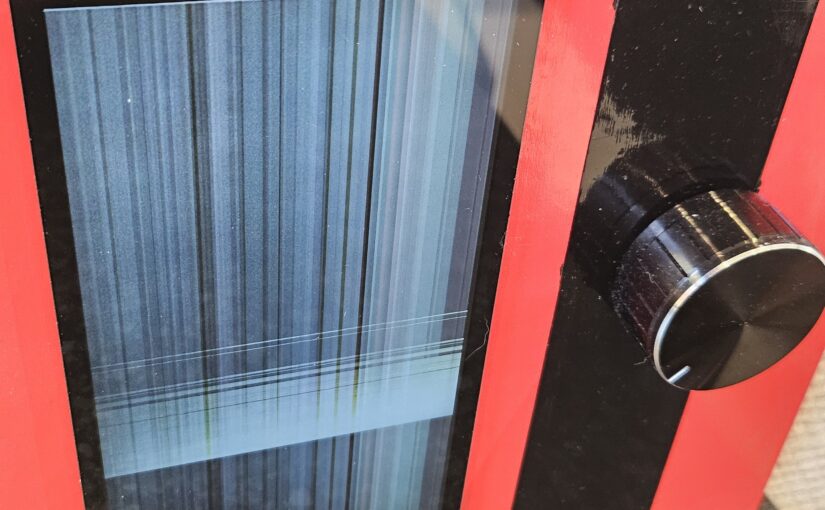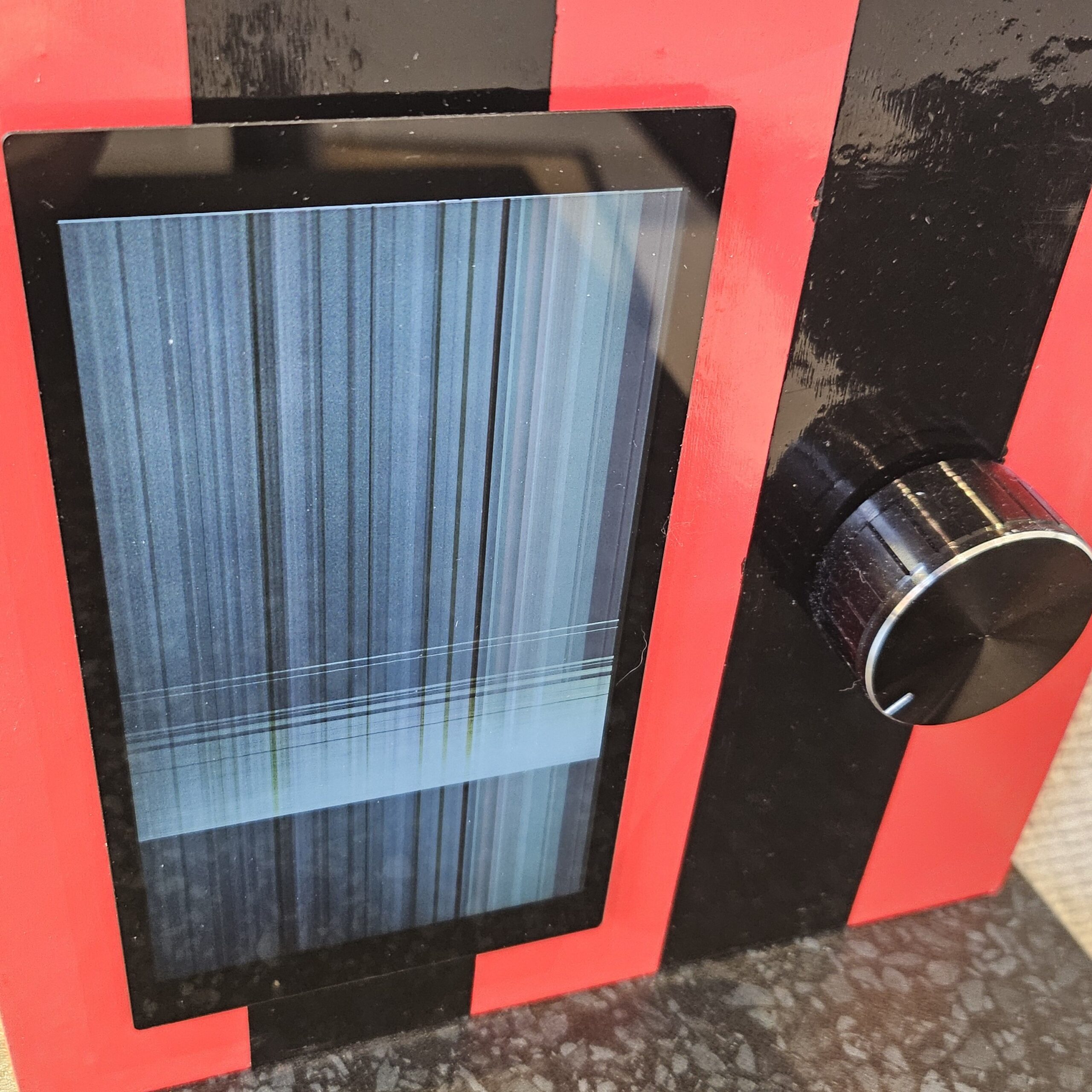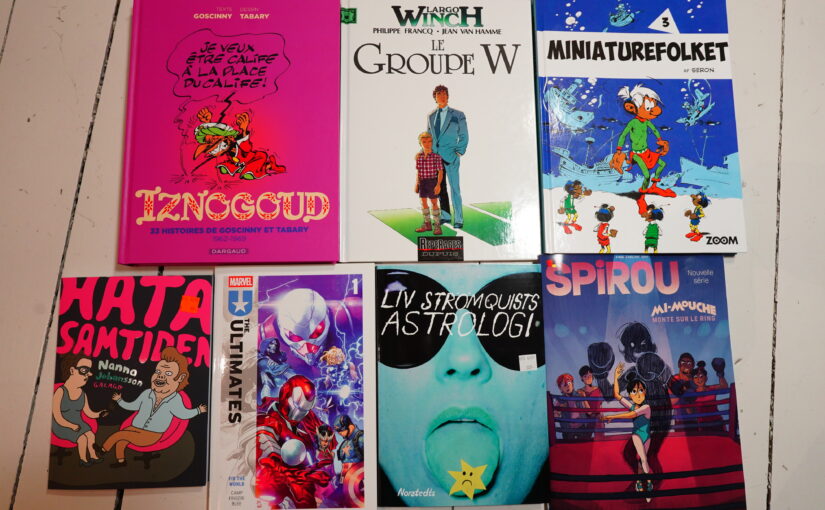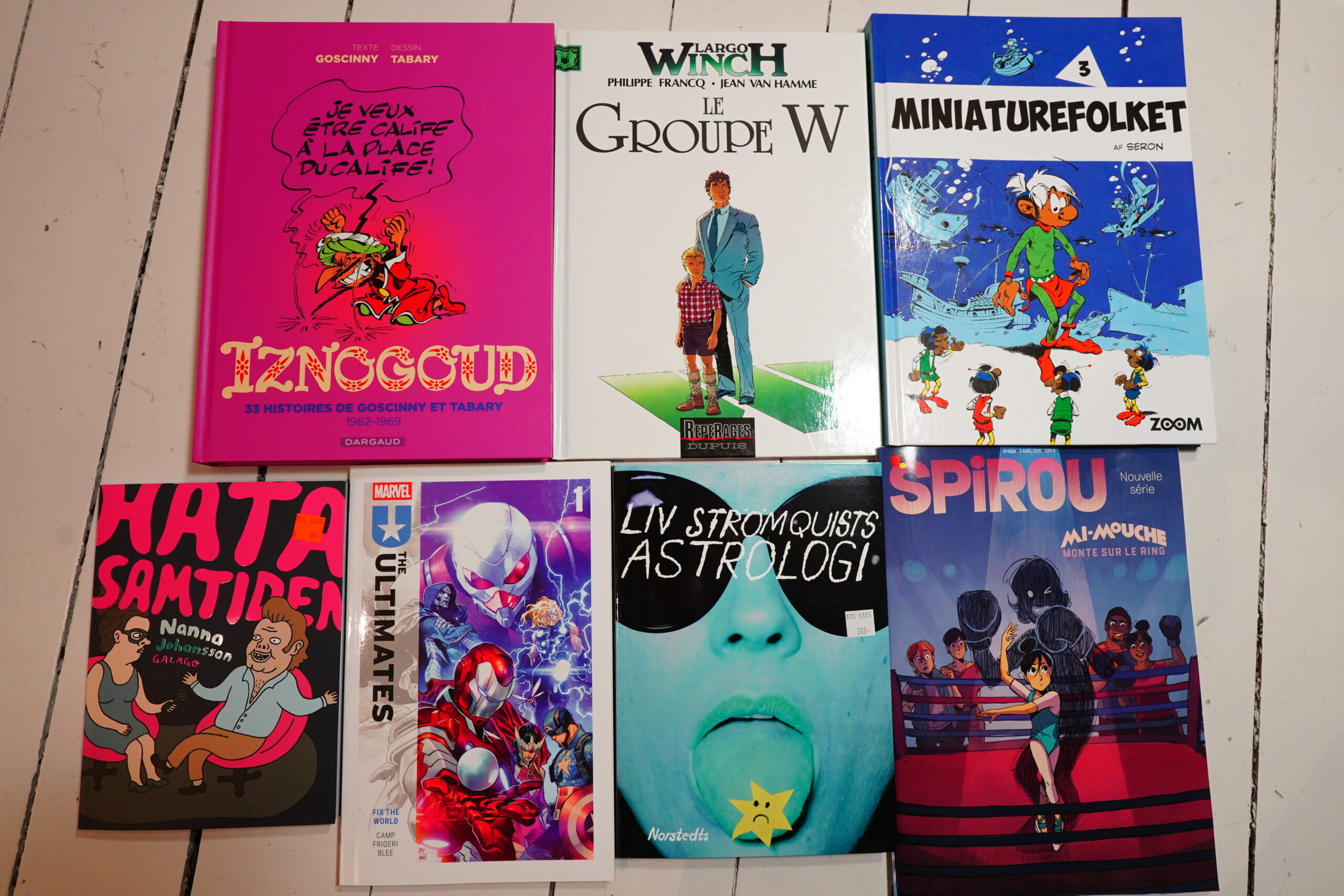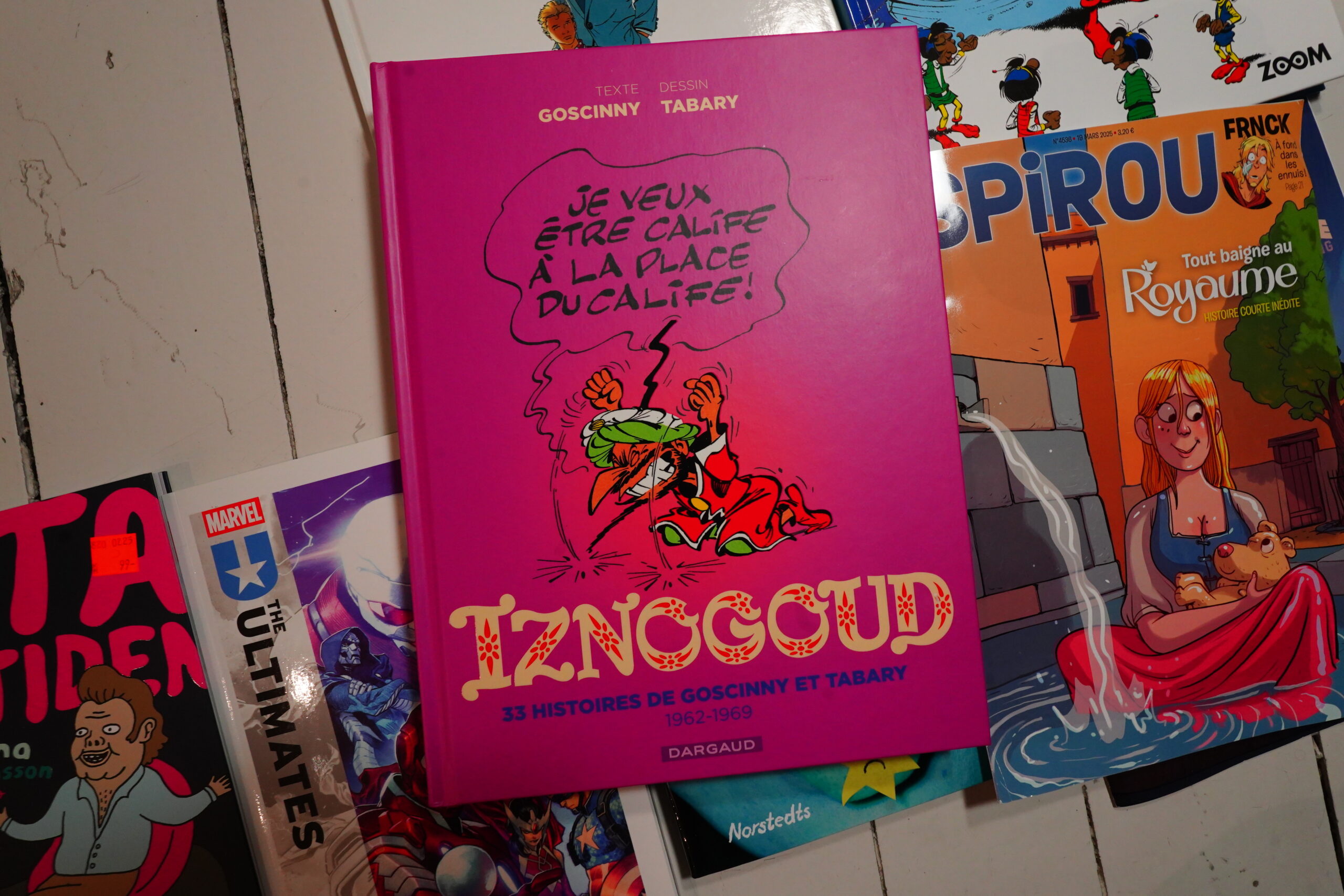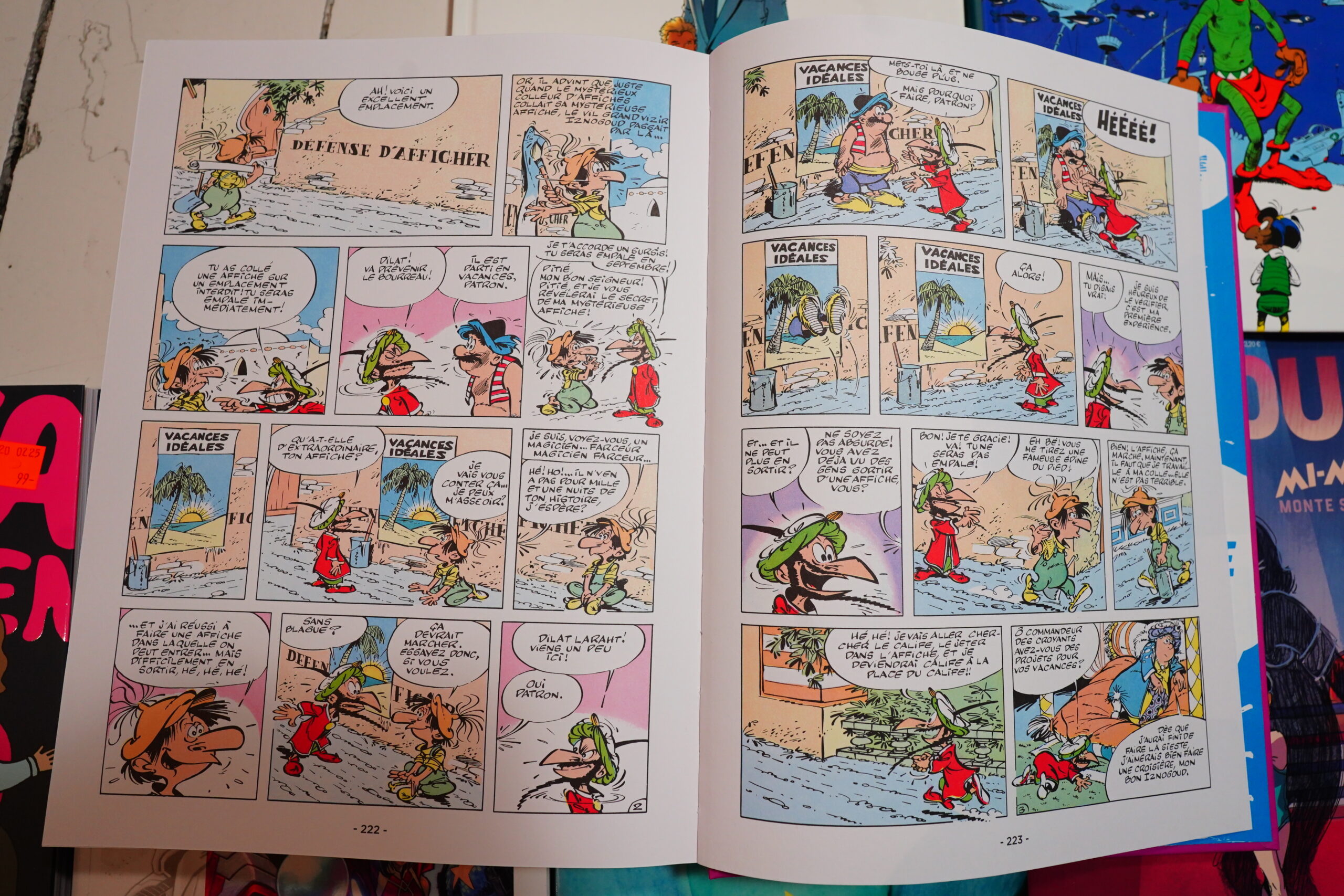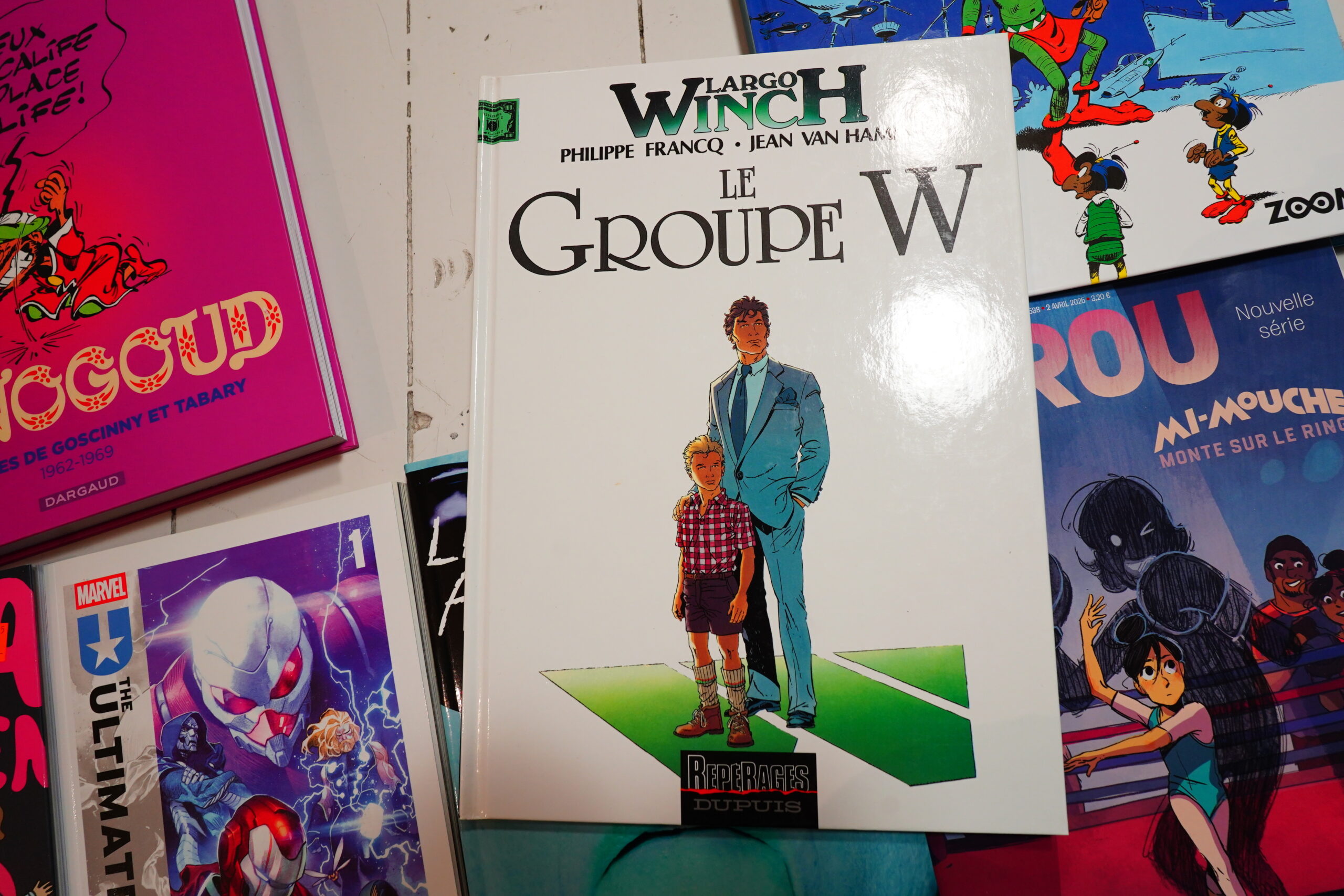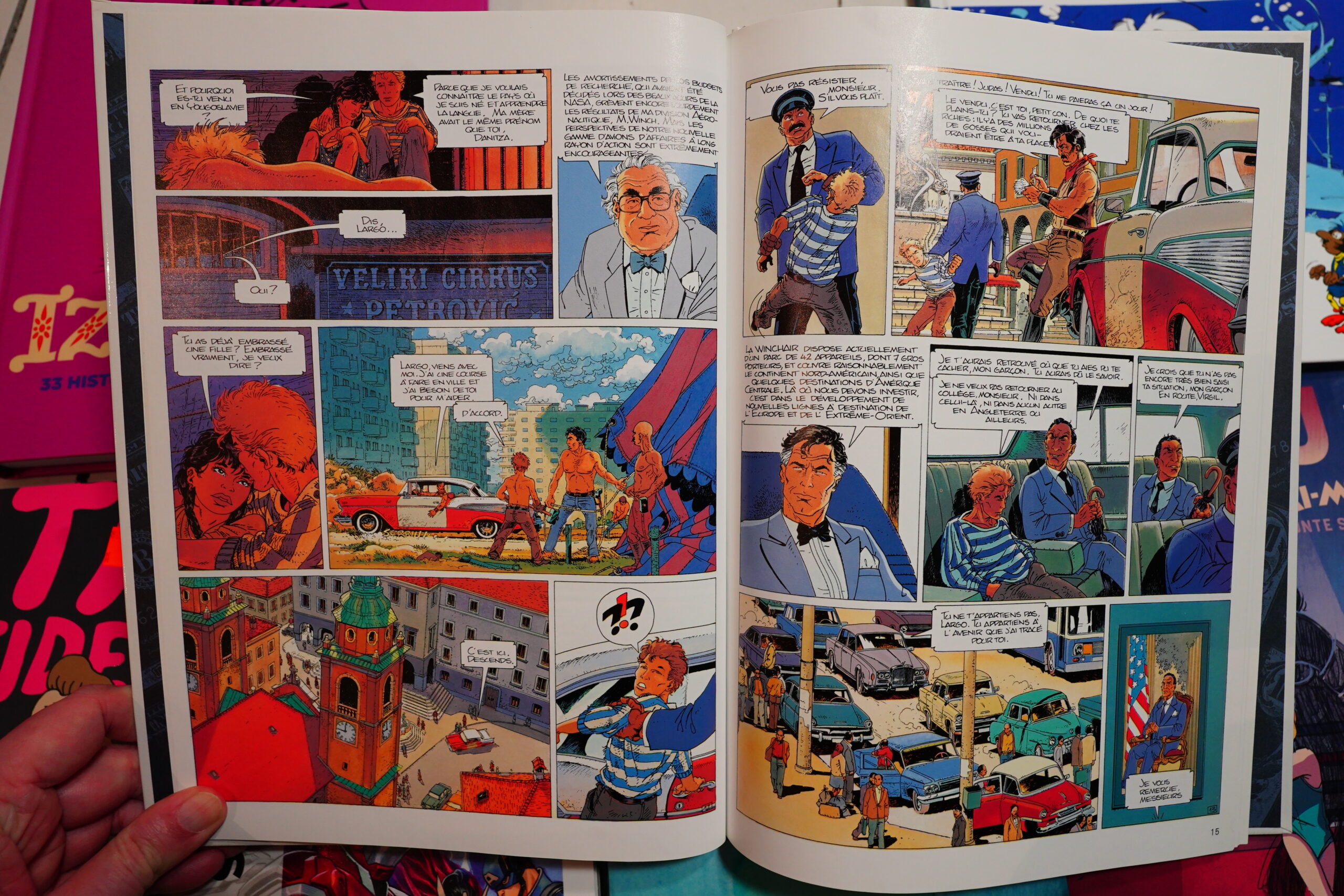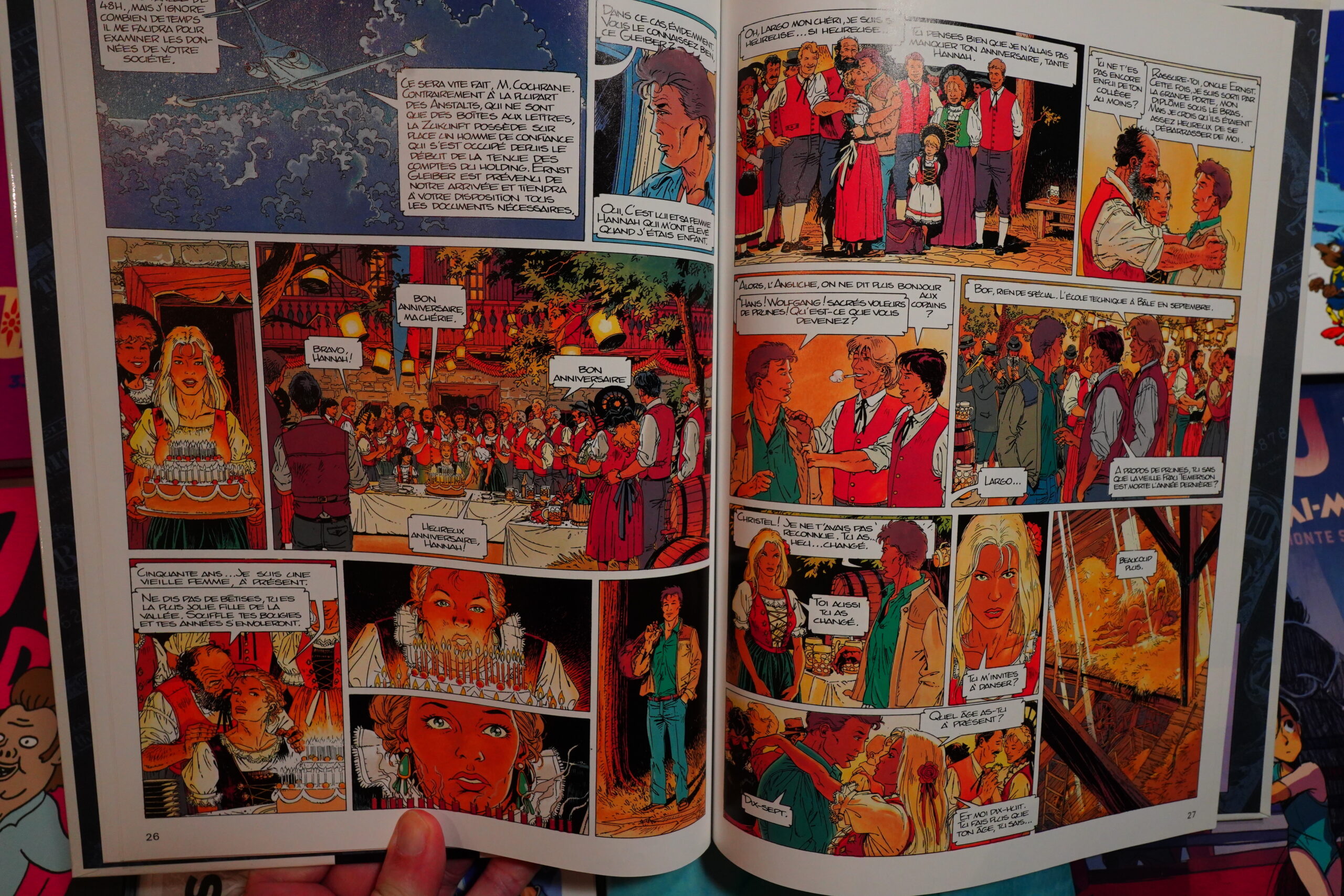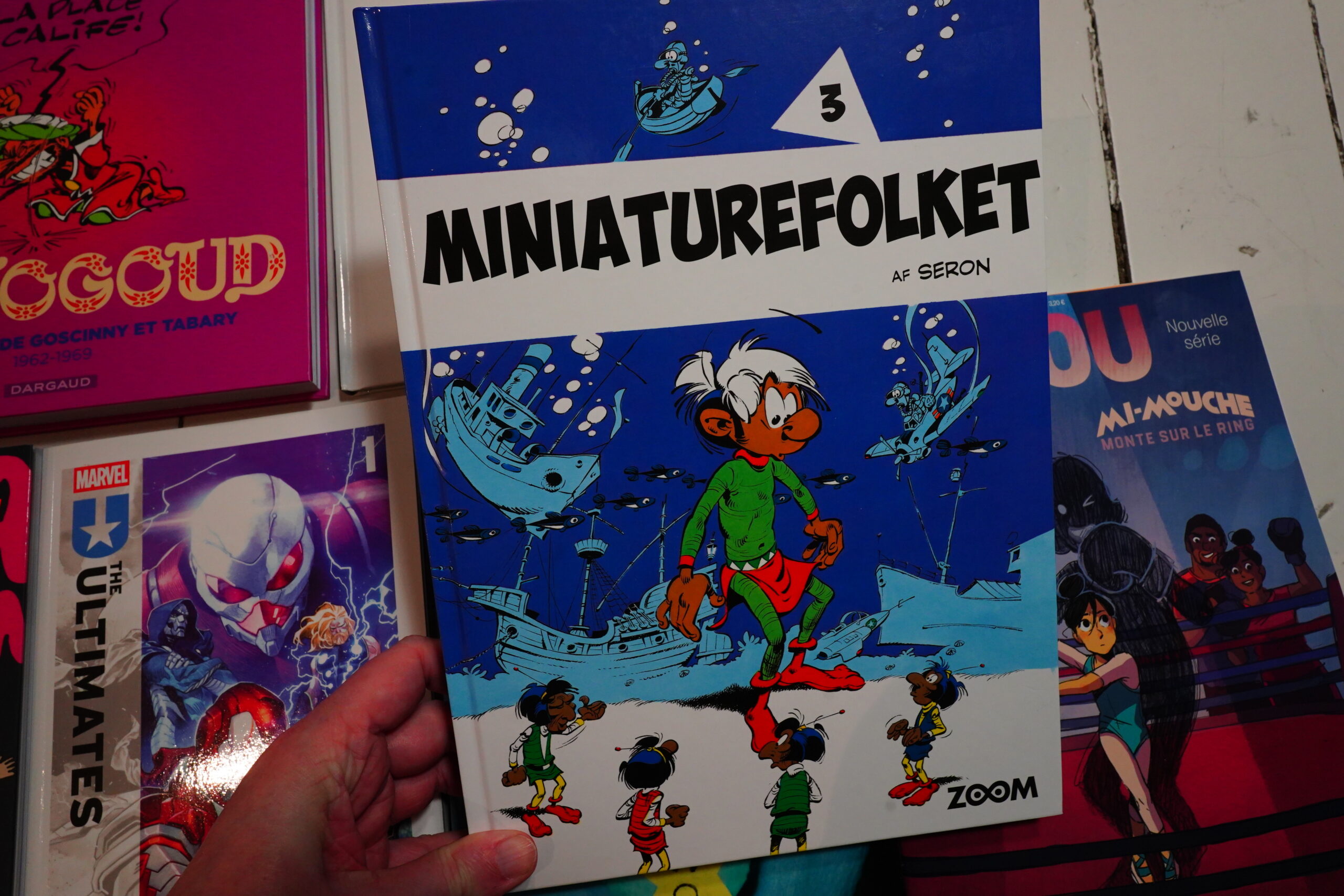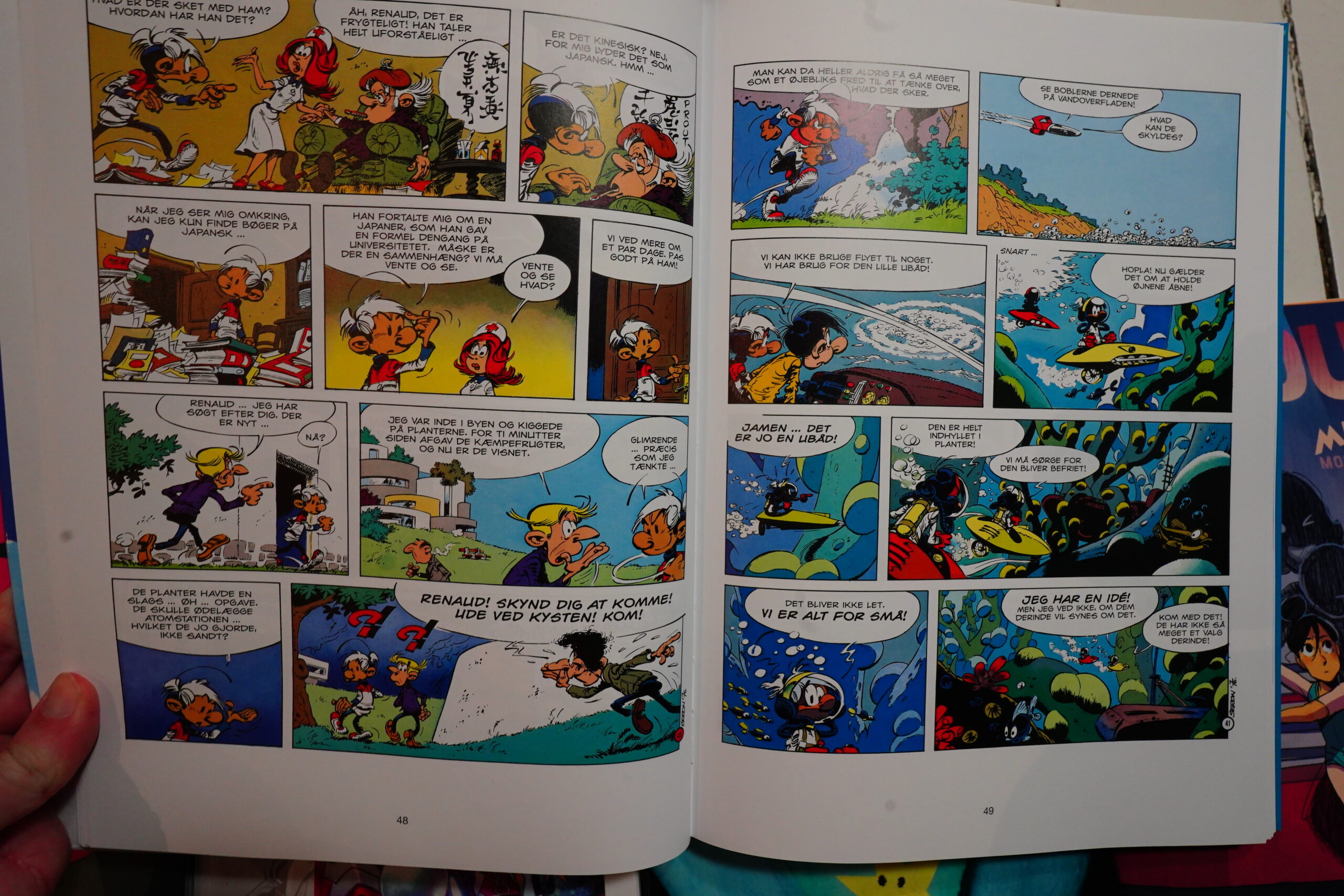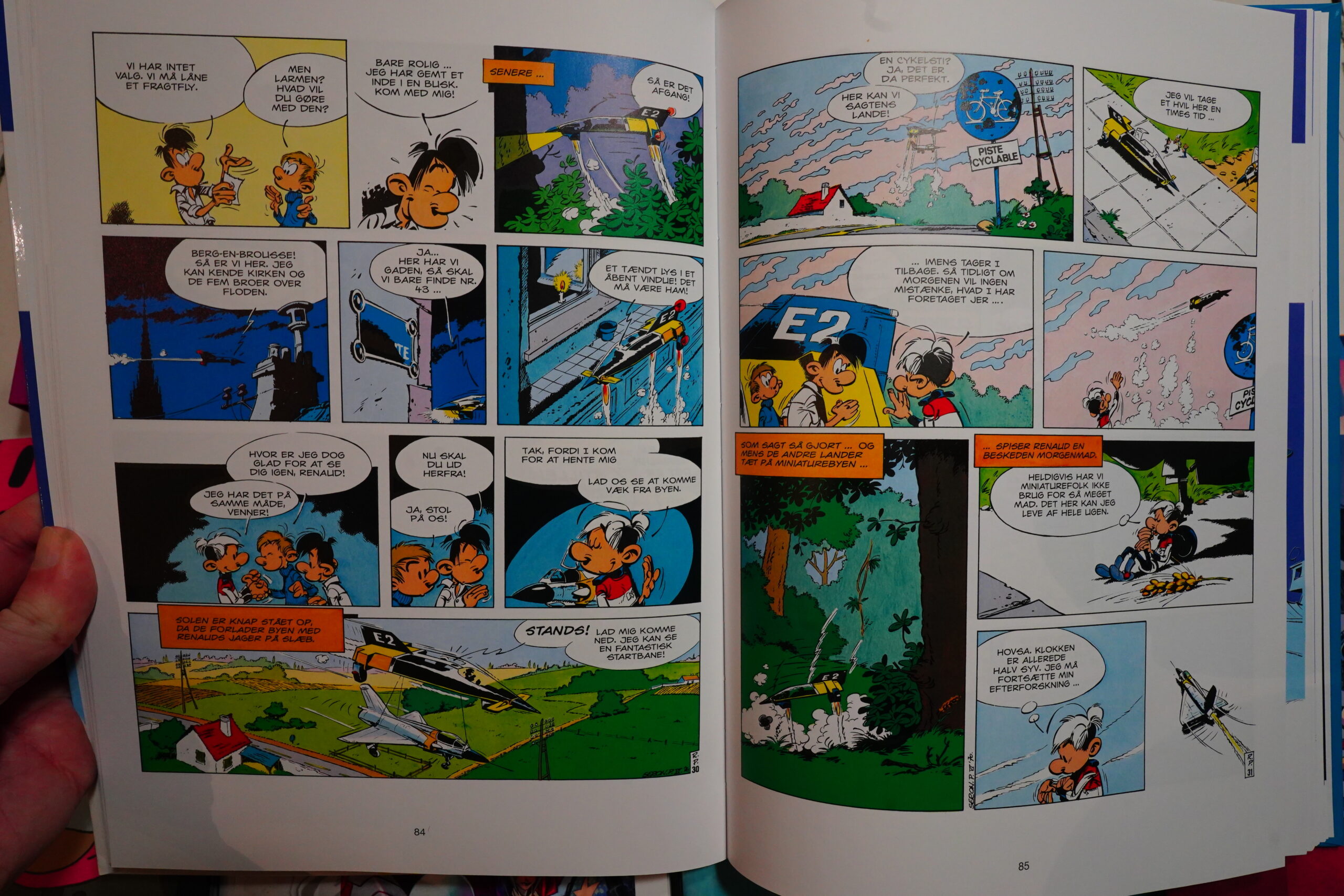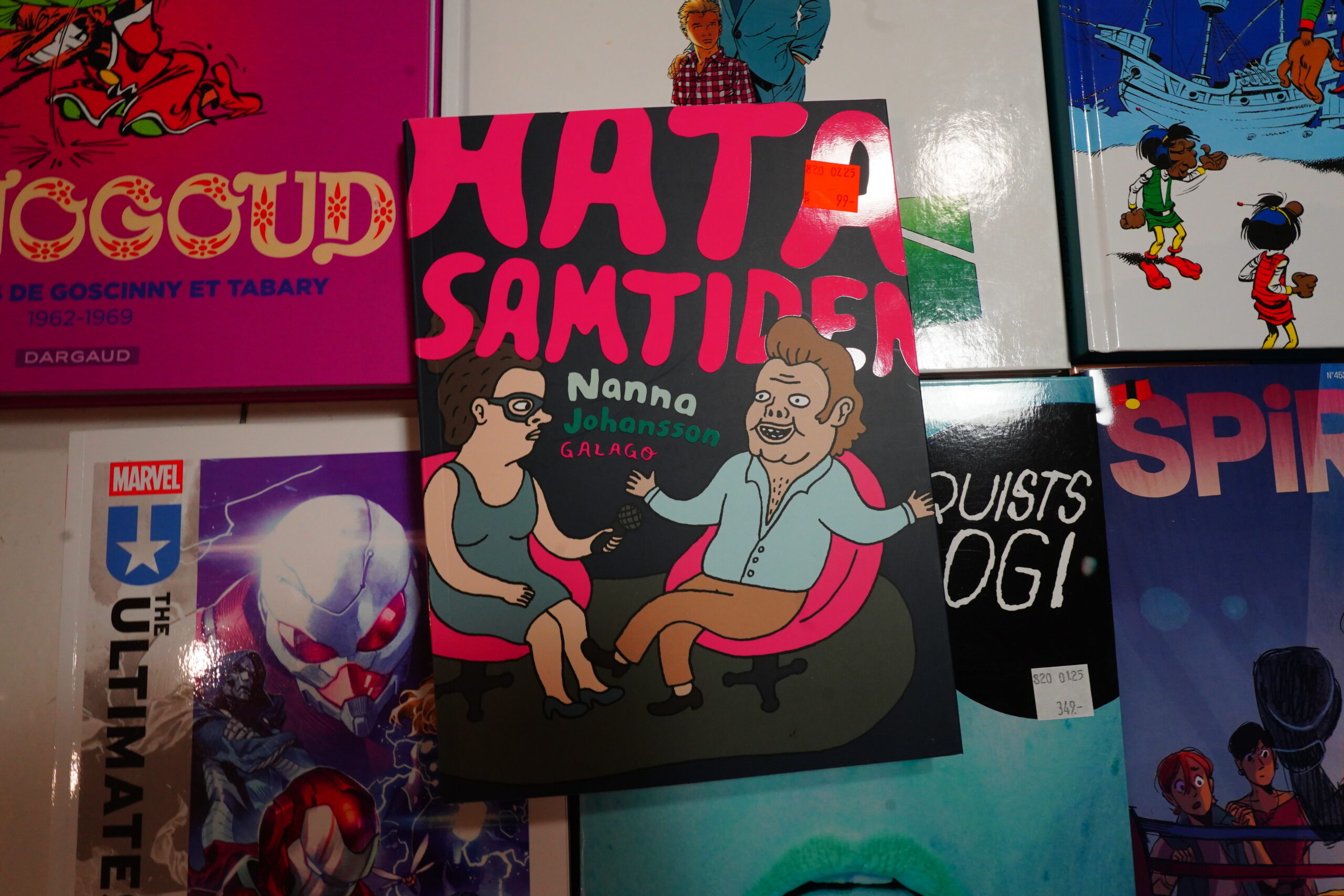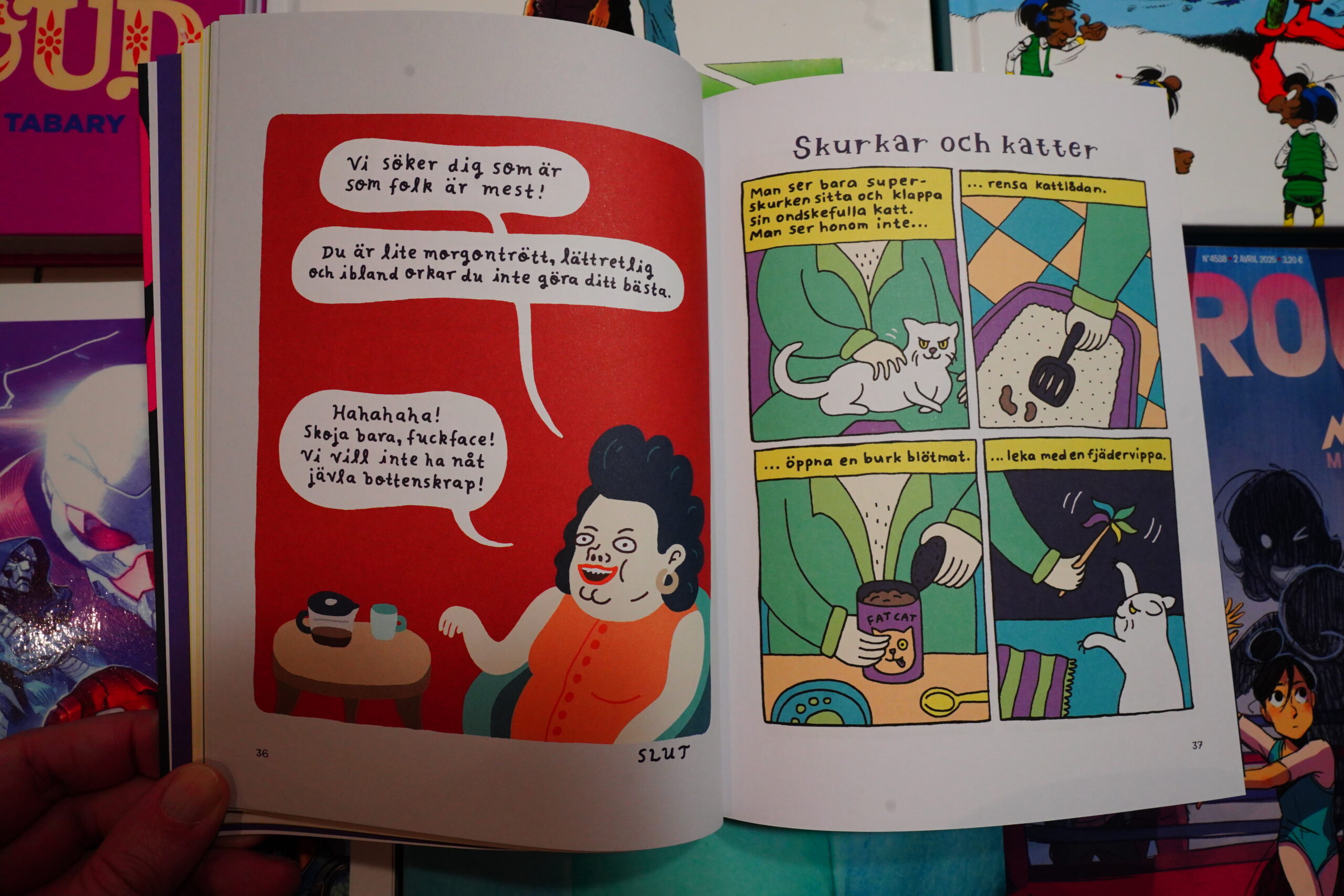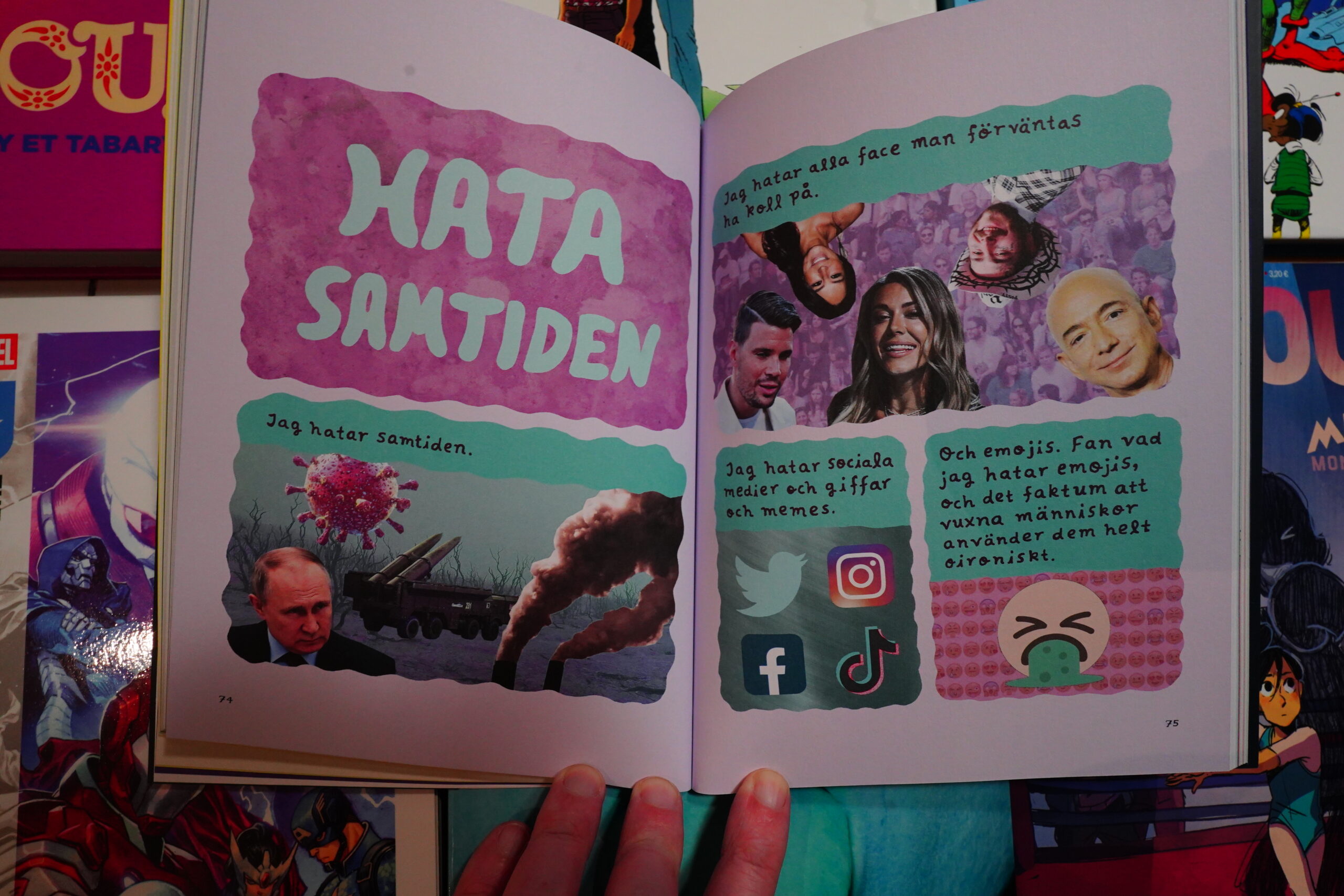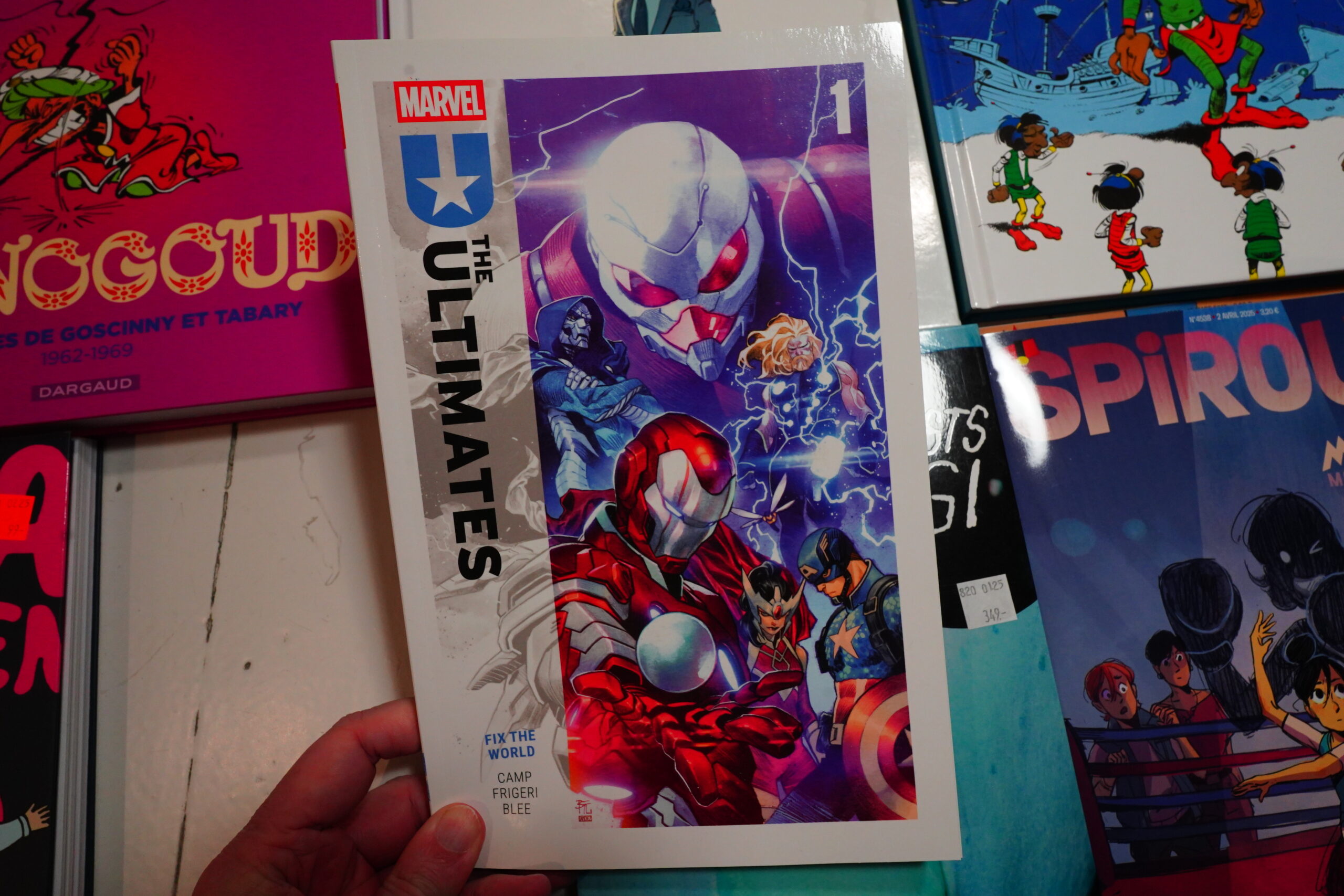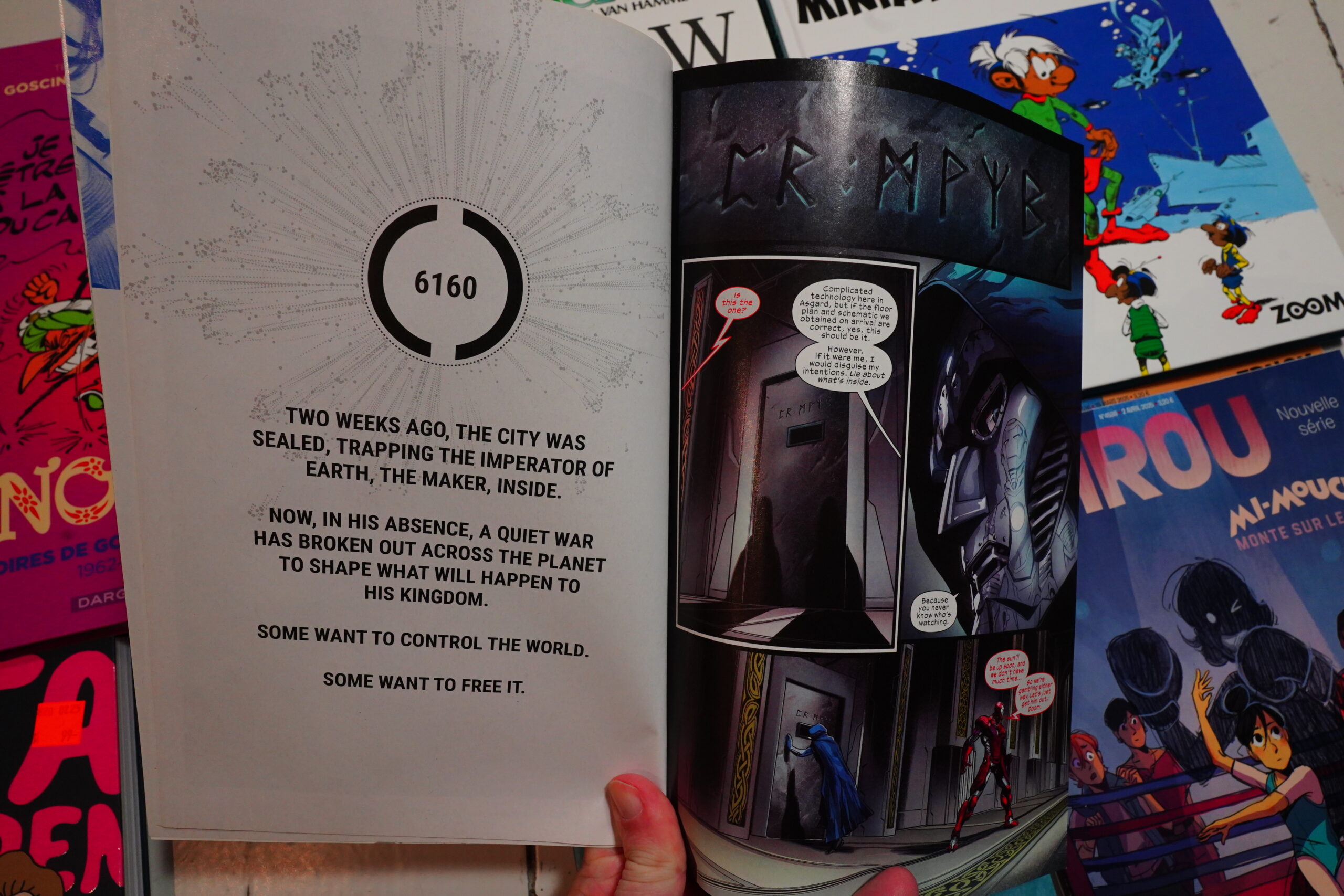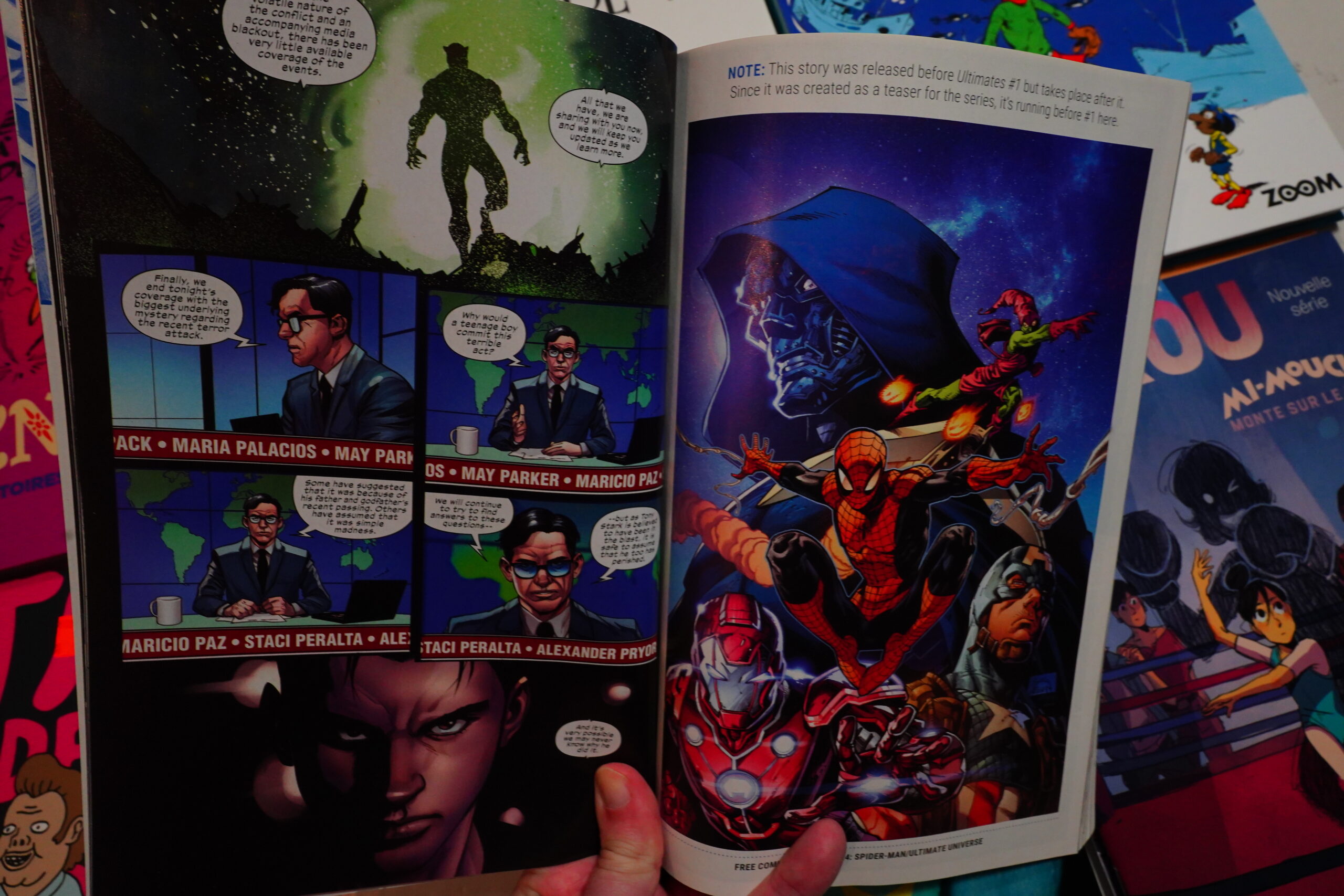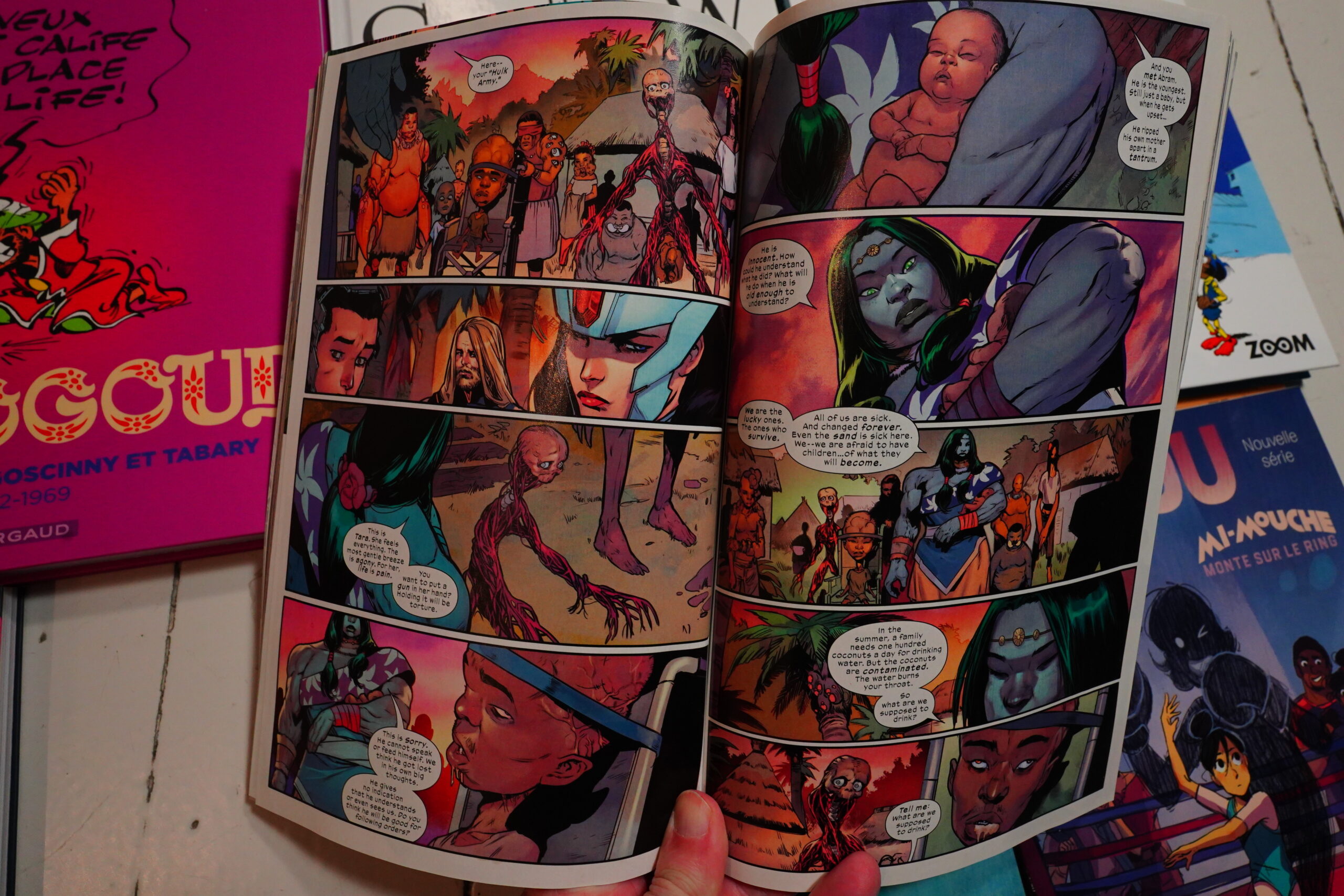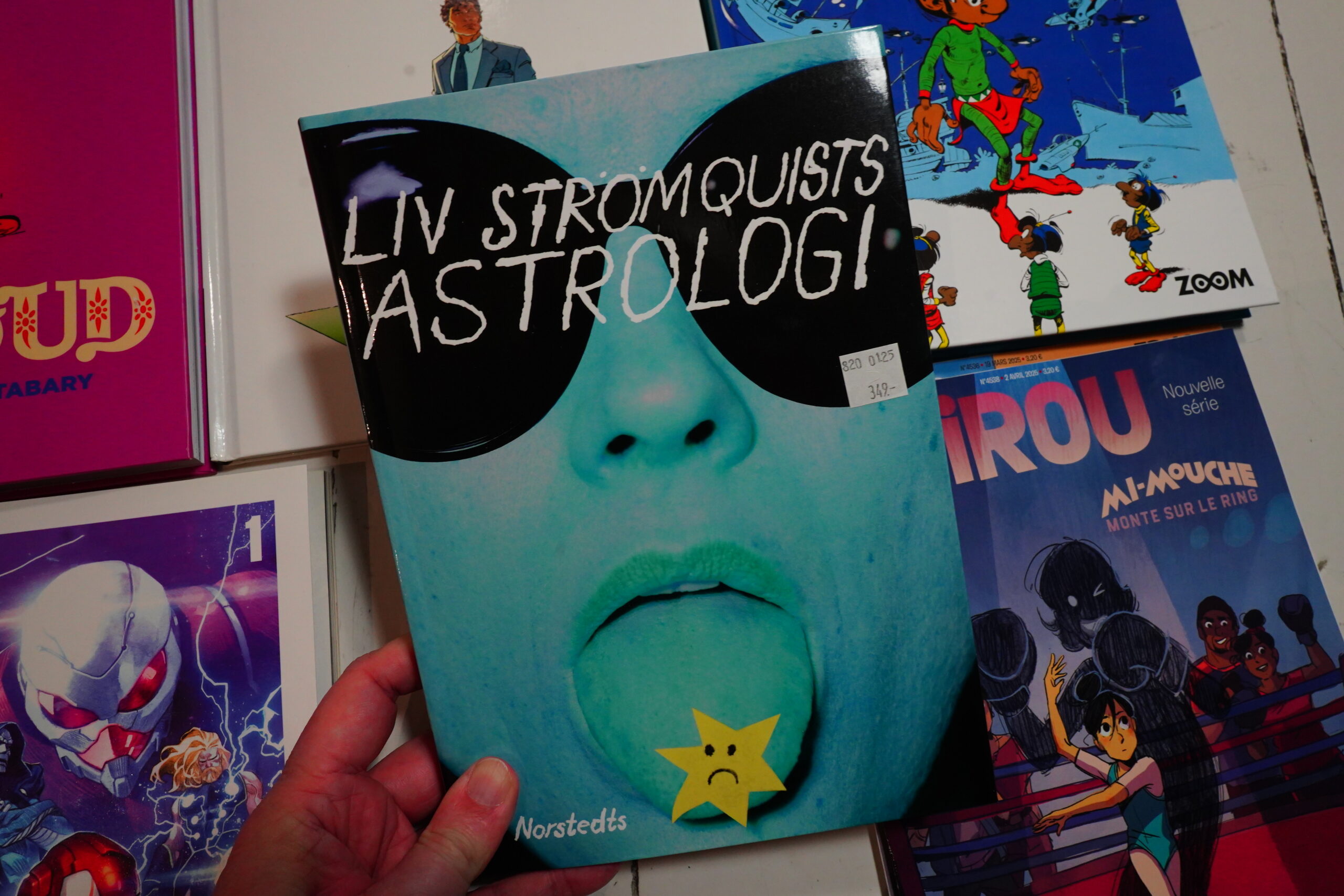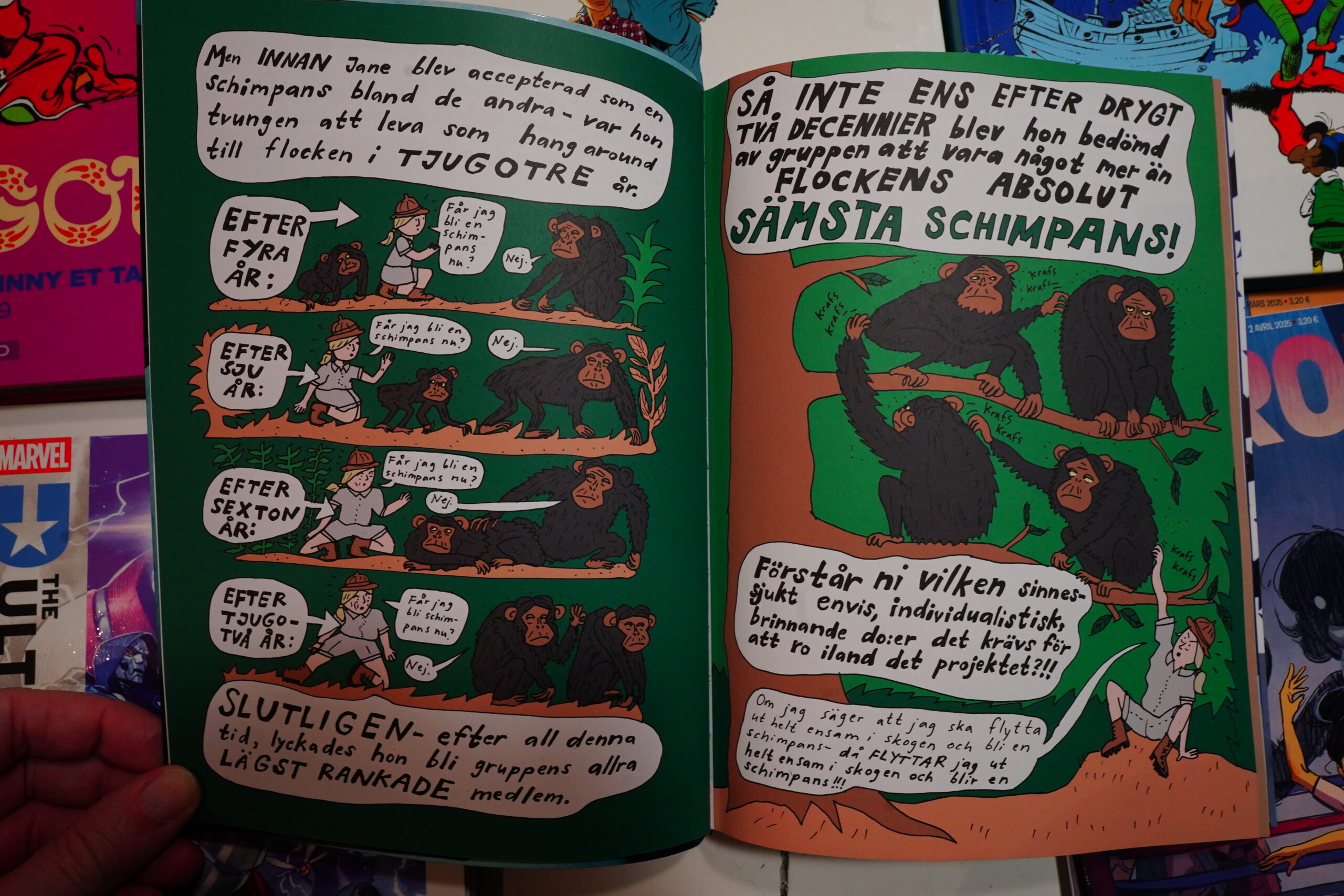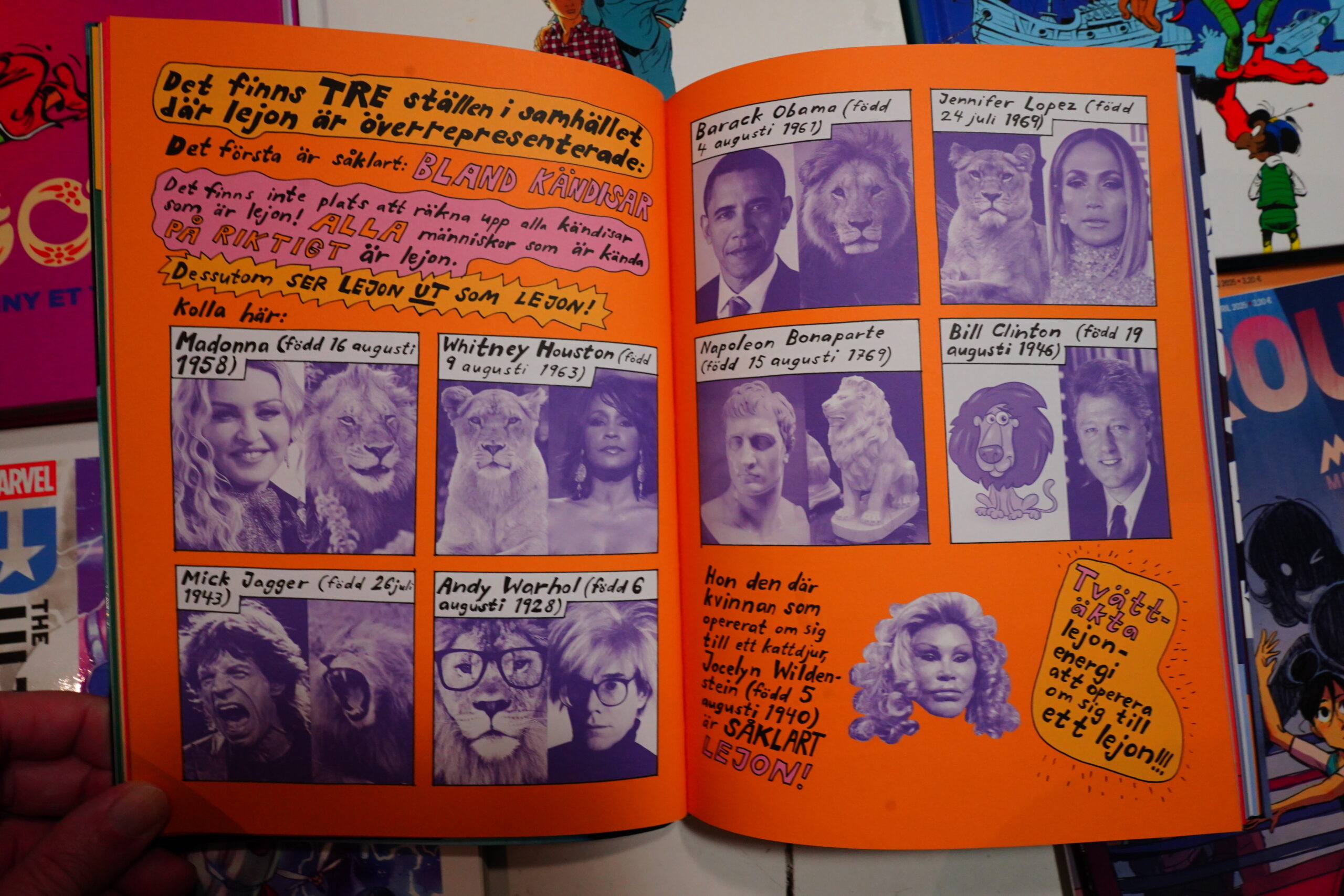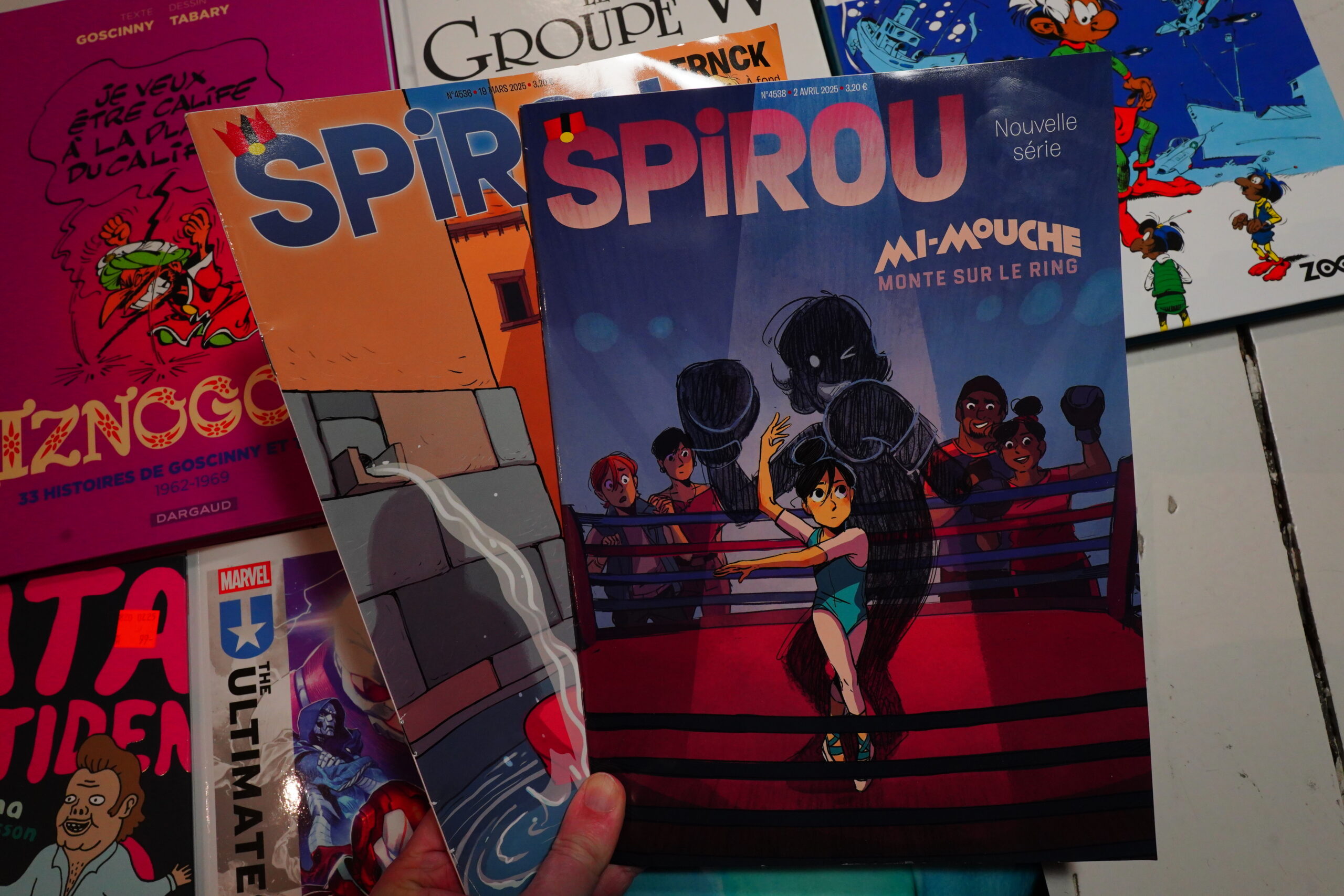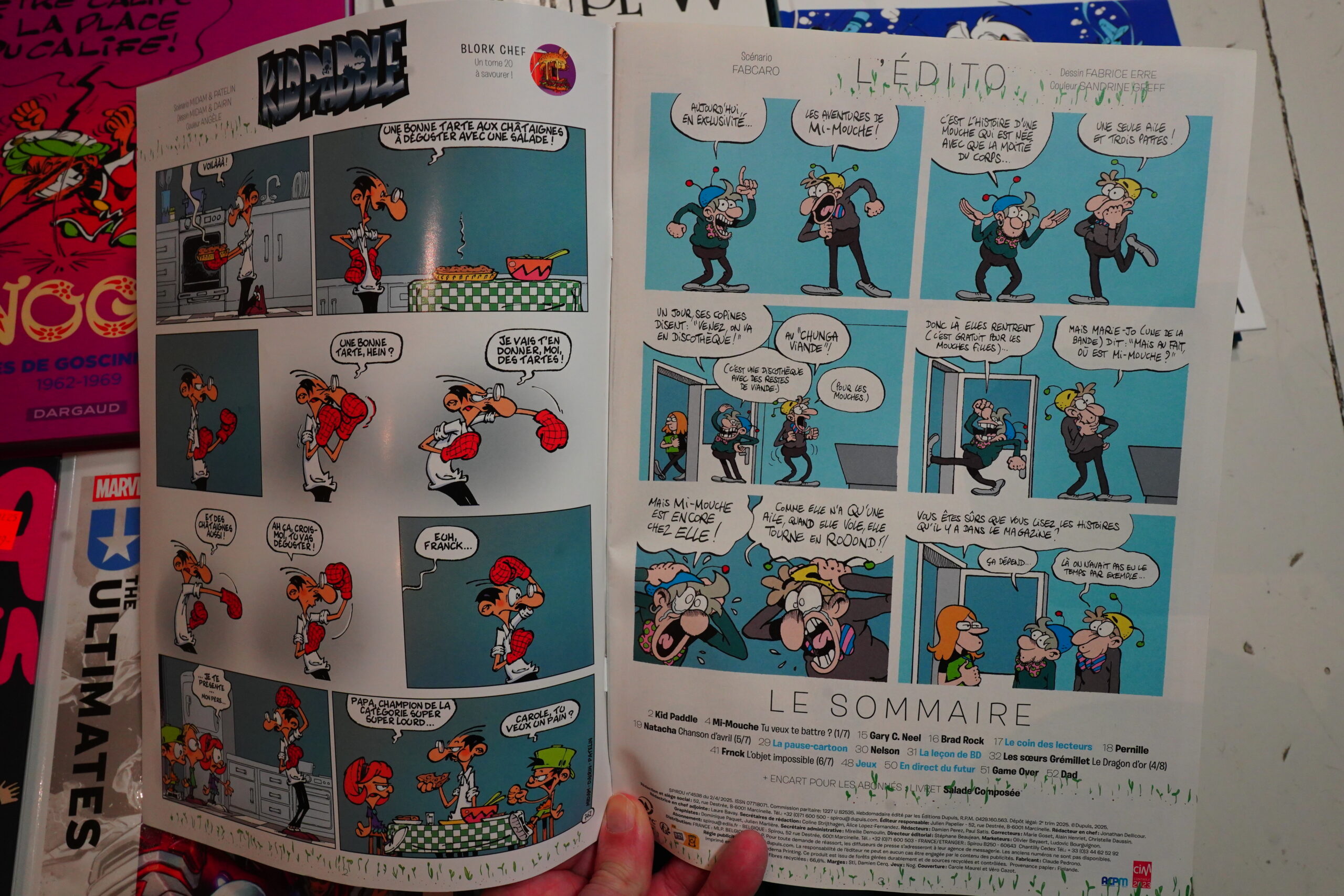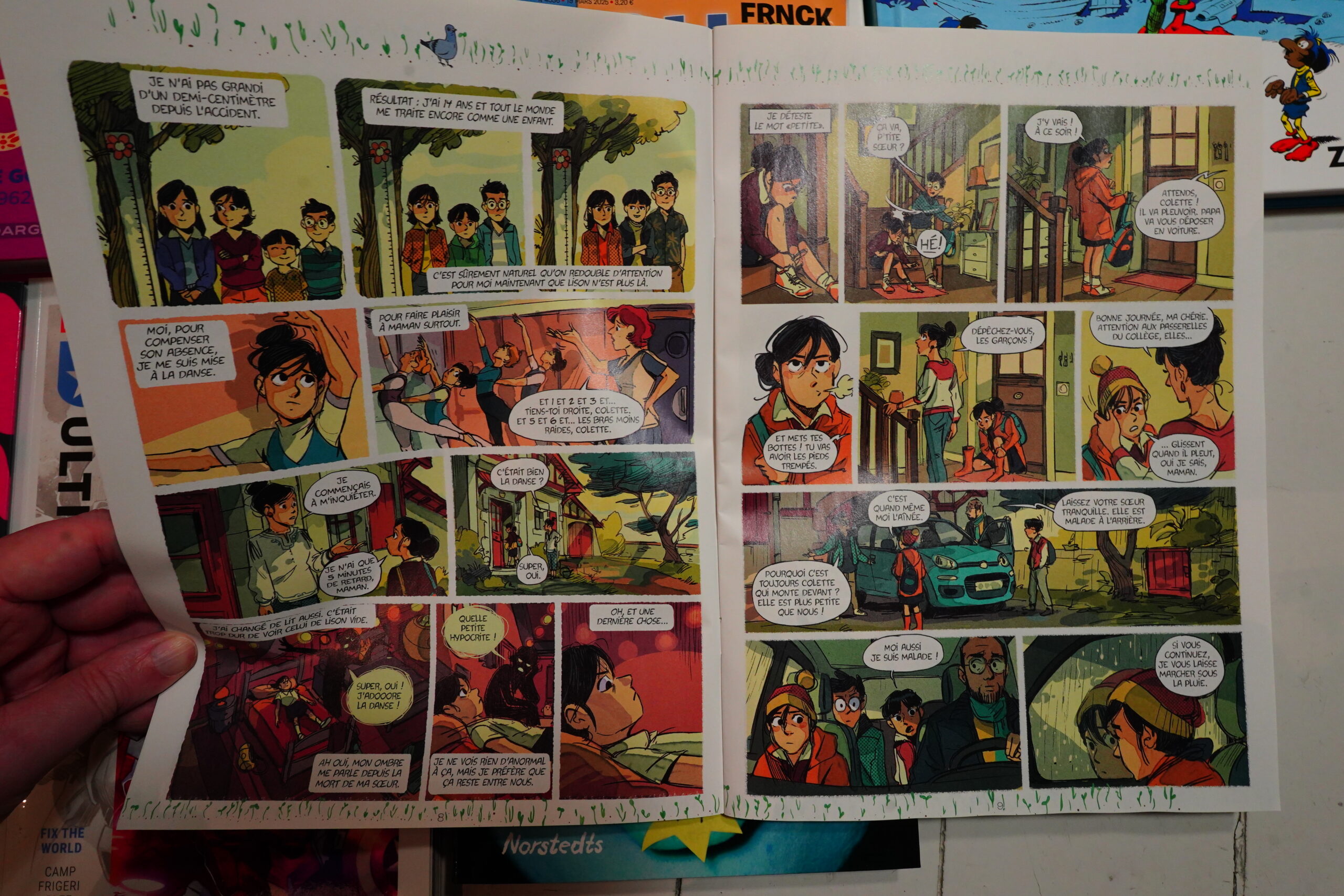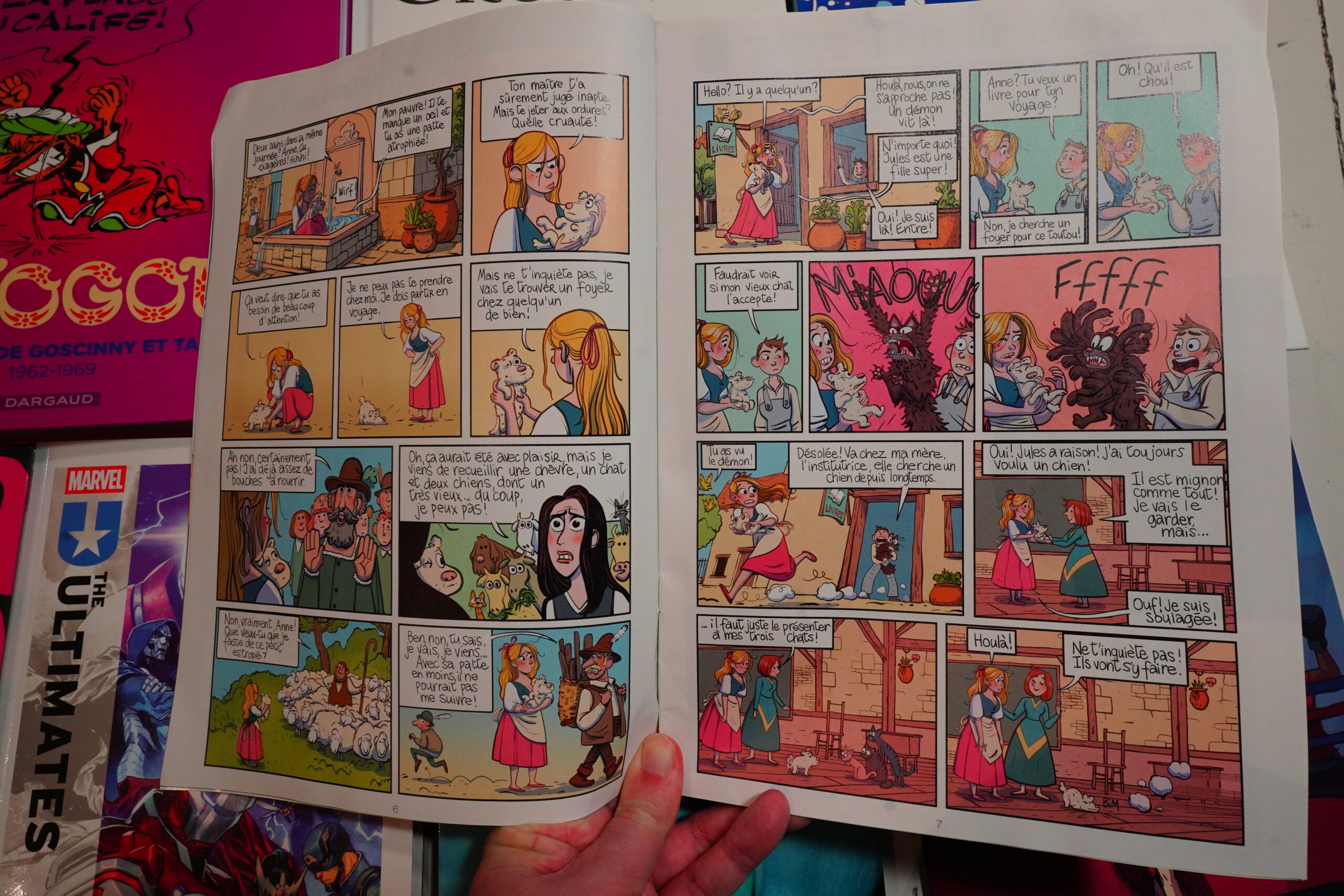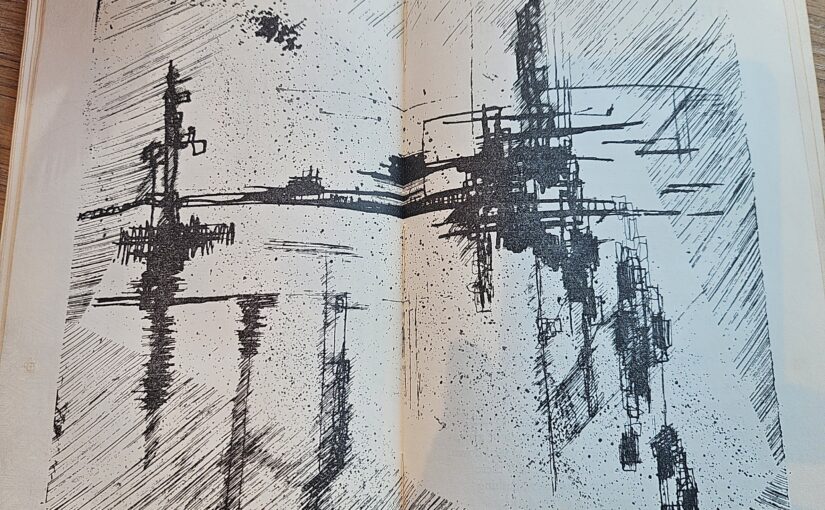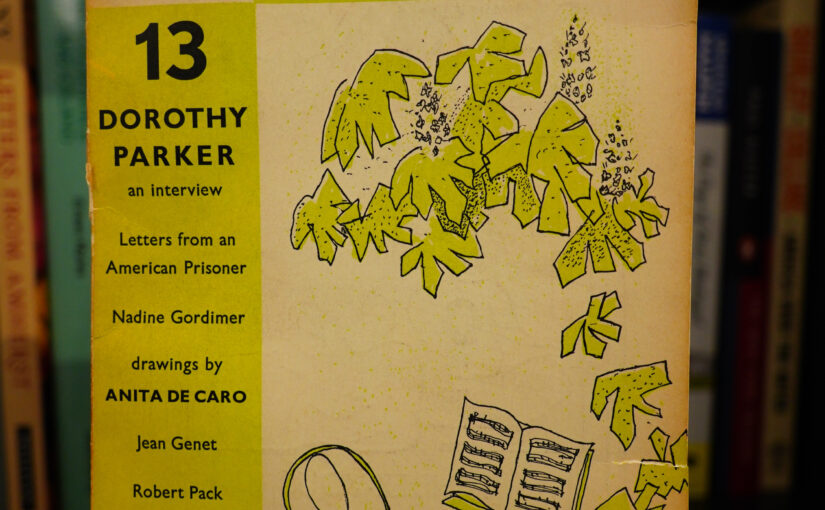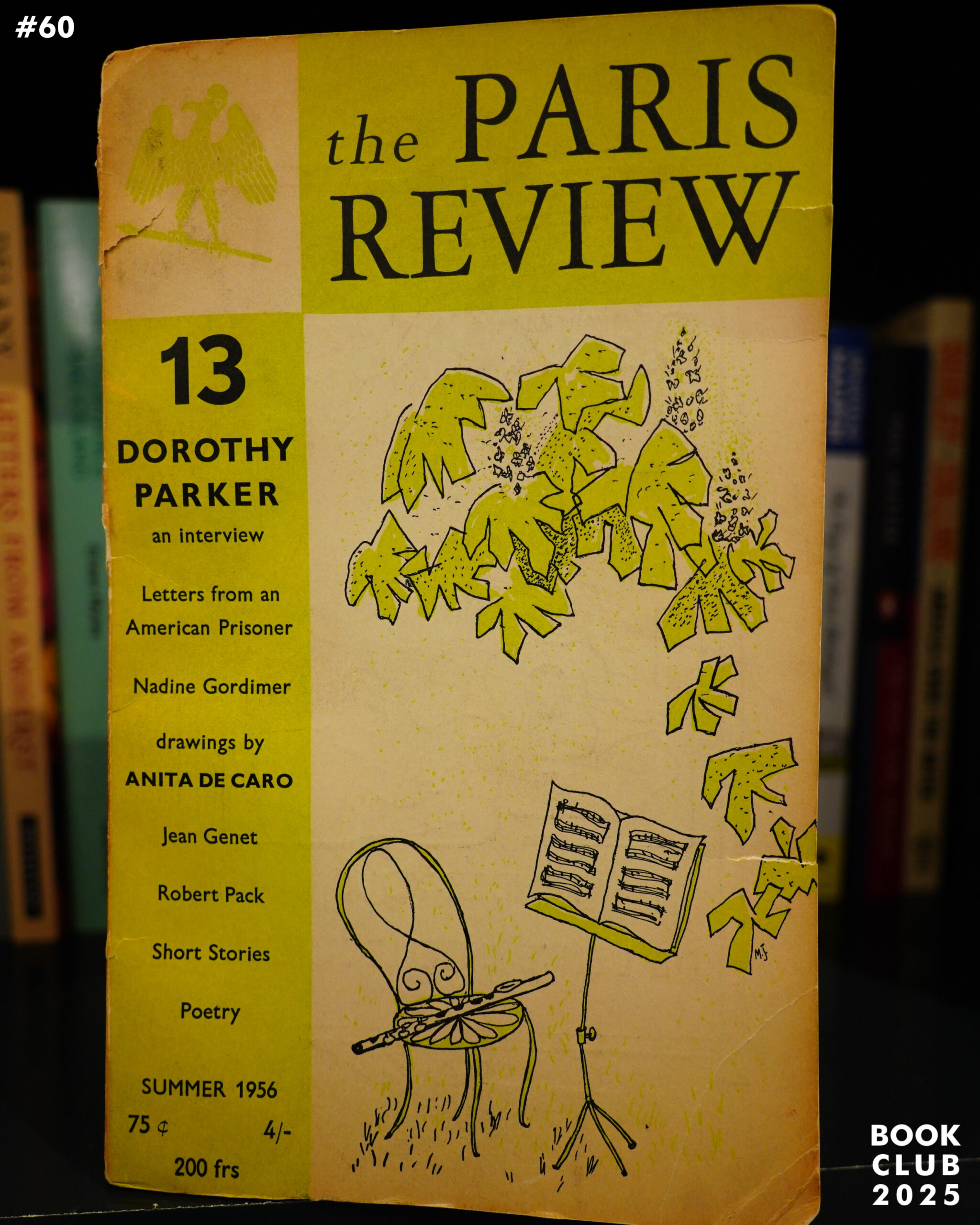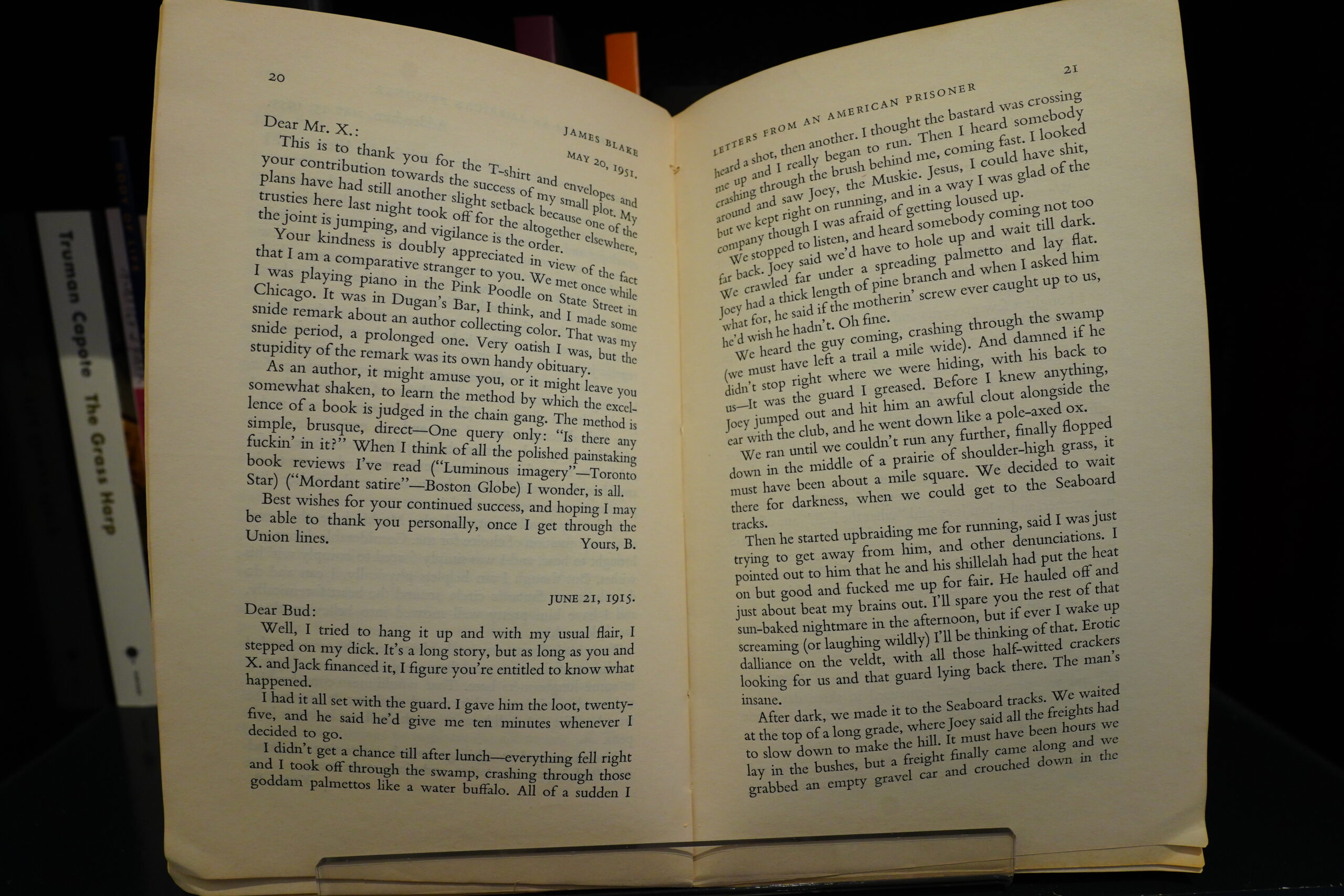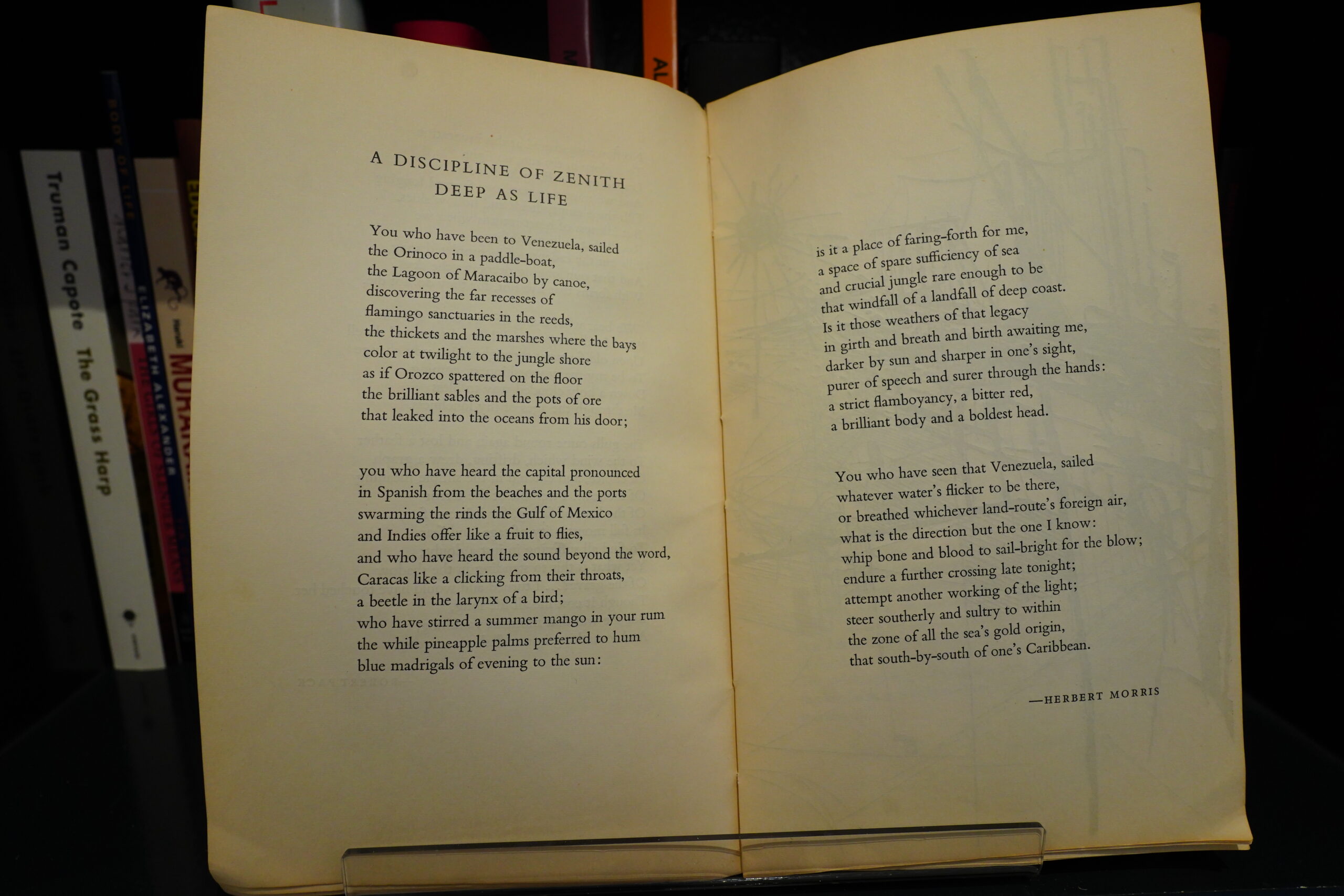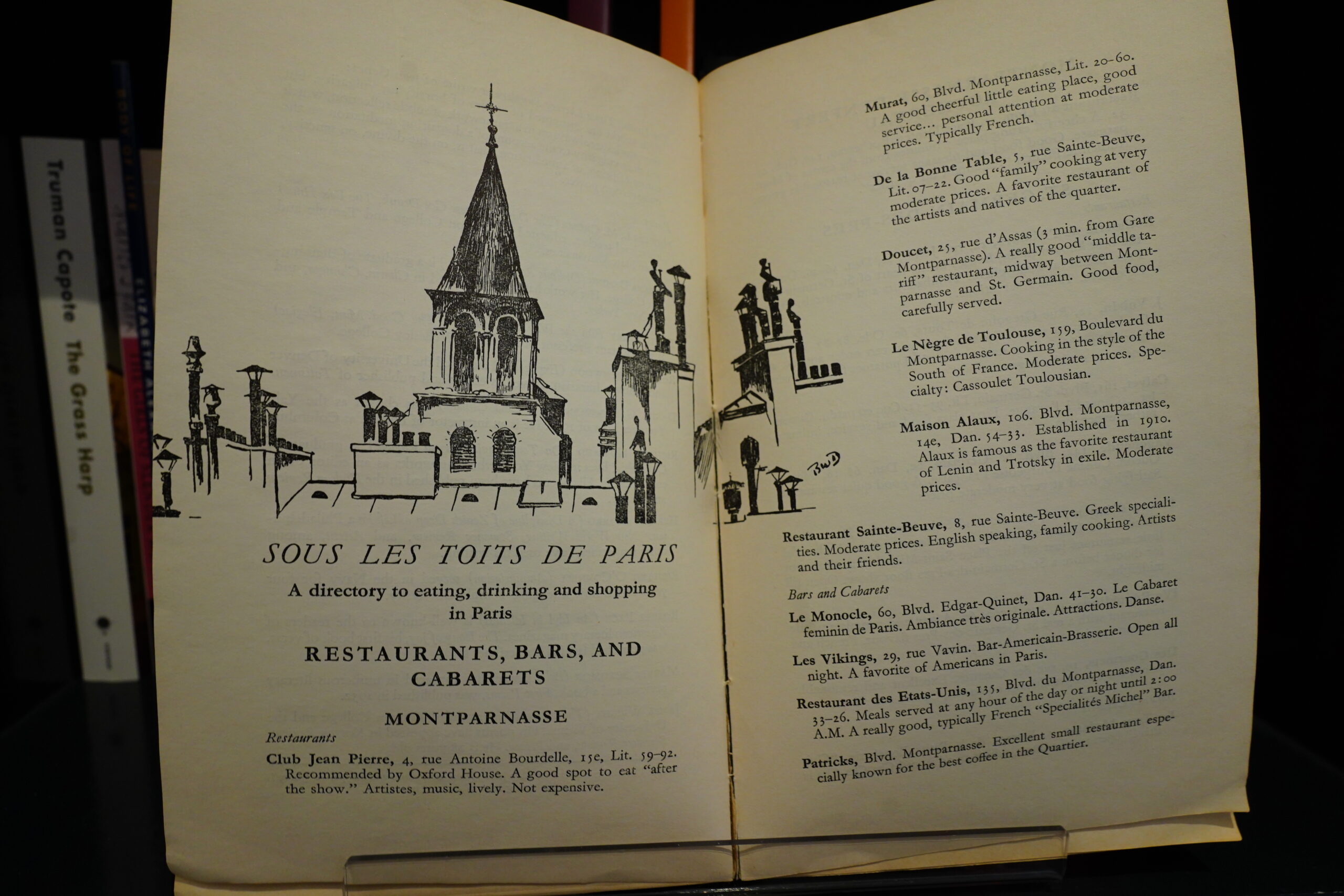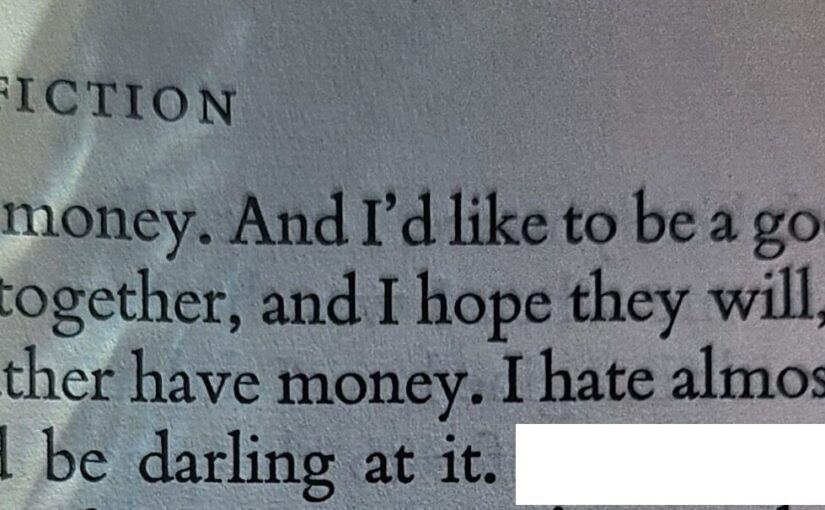Random Comics
Yes indeed, I’ve read some comics over the past few weeks.
It’s taken a while for me to get through this Iznogoud omnibus.
I’ve read all these stories as a child (in translation), of course, and… er… I wasn’t a big fan then, so I’m not sure why I bought this now. In French. I thought I remembered this being more for younger children than Asterix, so I thought it’d be easier to read, and perhaps it is, but it can still get pretty rough — Goscinny sometimes does pun after pun after pun (and then ends the series of puns with “(no wonder we never win any prizes for best-written comics)” or similar, and I’m not at a level where I can really parse those puns.
And I wonder how many of them survived translation, and whether that might explain why I didn’t much like this series as a child. It’s very repetetive, though, and that might explain it in any case: The stories are pretty short, typically eight pages, and each involve a new way for the evil, evil grand vizier Iznogood to try to topple the Calif, and every one ends with abject failure.
These probably read a lot better when serialised, because then you just get one of these plots.
I have to say that I liked it a whole lot better now then as a child, really, even if the (bad, bad) puns were a struggle.
Here’s another one I’m not a fan of, but it much newer.
And again, I kinda like it more now than I did when I read it in translation. The language Van Hamme uses is pretty much idea for someone who’s learning French, because he uses virtually no slang, and people talk very straightforwardly.
The artwork is pretty stylish, if somewhat standard, but Francq is totally unable to draw children or teenagers, which is a real problem in this series, because we flip back and forth throughout the protagonist’s life story constamment: In the second panel there, he’s a grown-up, and in the rest of these panels, he’s 17 years old, but the only difference is that he’s slightly less tall.
I’ve picked up half a dozen of these albums at a used comics book store here. Cheap!
Speaking of things that I’m not quite sure why I’ve bought… This is a series that ran in the 70s, by Seron and Mittéï.
Seron was, er, “inspired” by Franquin. He mimics Franquin so completely that every time I open a new spread, by brain unconsciously goes “oo Franquin!” and then I read the swill, and it’s such a letdown.
It’s just depressing to read this stuff, because it’s so badly written. There’s no tension, the gags are bad, and the stories make little sense.
I picked this up at a sale…
And it’s really funny.
It’s a Swedish comic about hating the world of today, and surely that’s something we can all agree with.
The reason I bought this is because Deniz Camp sometimes tweets fun stuff.
This is how it starts — so this is part of some crossover thing I’m vaguely aware of, but anyway, this is, like, so symptomatic of Marvel these days: The original Ultimate Universe (of which I’ve read nothing) was apparently about bringing new readers in, but this is pretty hermetically sealed — it’s hard to see how this book would appeal to anybody but the hardiest Marvel fan.
First there’s an issue of a series called Ultimate Universe, and then we get a story from a Free Comic Book Day book, and then we get Ultimates #1. By which time I’ve totally lost interest.
And it’s just… meh. Half the book is odd versions of Marvel super-heroes fighting each other, and half is Such Shocking. It’s tedious beyond belief.
I’ve read a few of Strömquists books, and she writes about, er, current affairs. Her latest book was about how horrible the culture of self optimisation is (and how risible the manosphere is), so I assumed that this was going to be a fun look at astrology.
But it’s not! Instead it’s mini-biographies of various famous people, and how they’re behaving according to zodiac signs.
I mean, it’s not “serious” serious, but it’s boring.
I think the mail lost a couple of issues of Spirou…
The “editorials” (by Les Fabrices) remain the funniest bits here.
But there’s also some good serials for a change, like Mi-Mouche.
And this one was pretty fun, too.
And that’s it.
Anita de Caro
Book Club 2025: The Paris Review #13
This is from 1956, when the Paris Review was still being published in Paris. It was a much slimmer affair back then — just 140 very thin pages.
The longest piece here is “Letters From An American Prisoner” by James Blake. It’s a series of letters from Blake (who was incarcerated at the time) to two different friends (one called Bud and the other is wholly unnamed). It’s an extraordinary series of letters — there’s a prison escape, and also lots of (voluntary and not) prison sex, so I assumed that it was all fiction.
James Blake (1922 – February 20, 1979) was a jazz musician and petty thief who became a literary sensation in the 1950s when he published his letters in the Paris Review.
And he went back into jail after the stint described in his letters here:
“It was his first experience at doing time, and although Blake was absolutely out of character as a criminal type and, by his own admission, the world’s most inept burglar, he discovered that confinement offered such sovereign satisfactions and fulfillments that he caused himself to be incarcerated at the Jacksonville jail or, even more happily, at “The Joint,” the Florida State Penitentiary at Raiford, for 13 of the next 20 years.
Geez.
Among other notable texts is a the story of a wrestler who tries to become a journalist…
… and a very witty interview with Dorothy Parker (who resents being called witty).
The poetry in this issue is mostly pretty obscure.
And there’s a guide to restaurants and sightseeing tips and stuff.
This is the first issue of The Paris Review from the 50s I’ve read, and I don’t think it’s quite found its footing yet. I mean, most of the stuff in this issue is pretty good, but there’s only a couple of outstanding pieces.
The Paris Review #13 (1956) (unrated on Goodreads)
